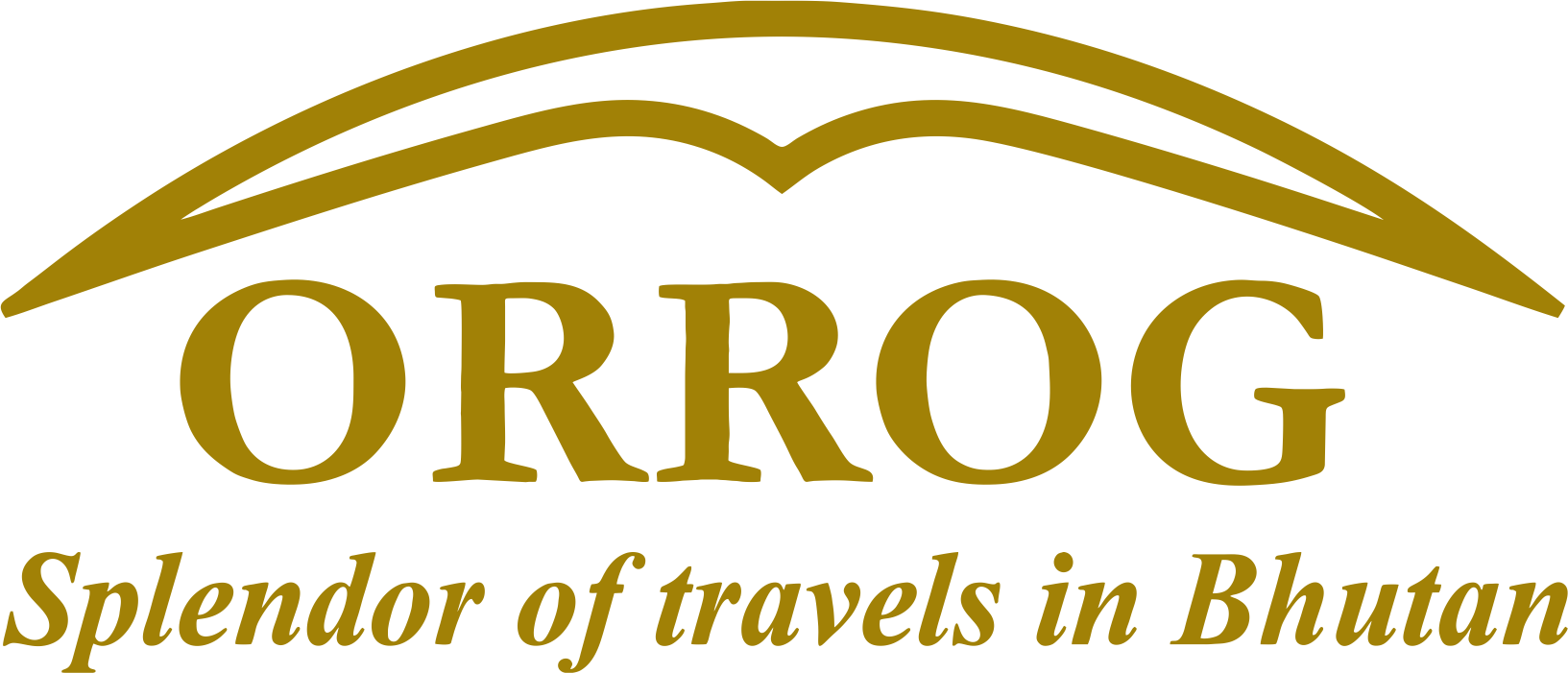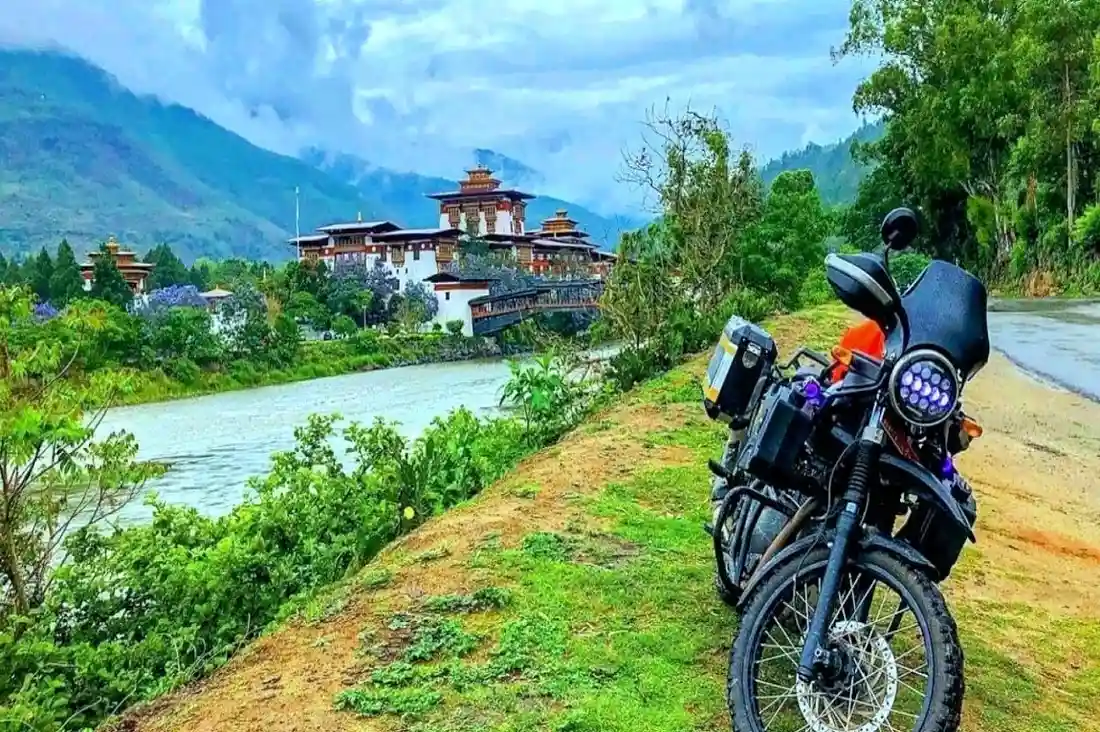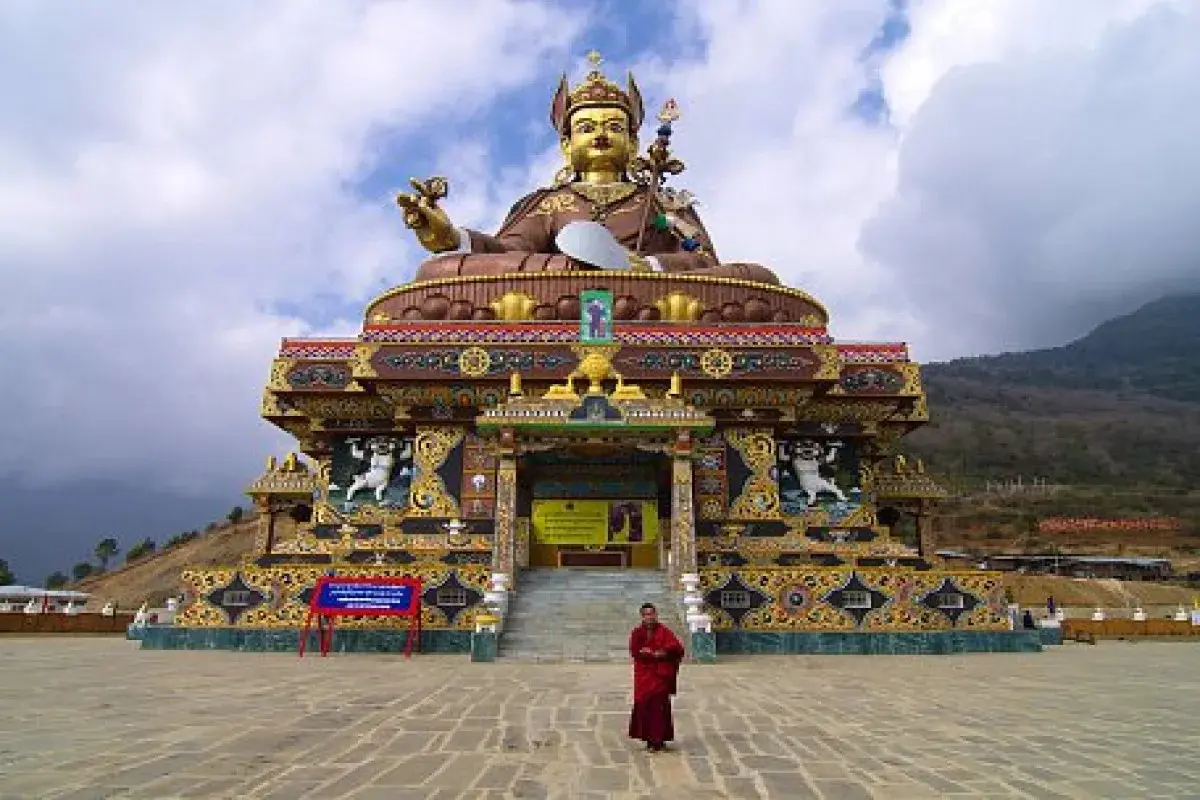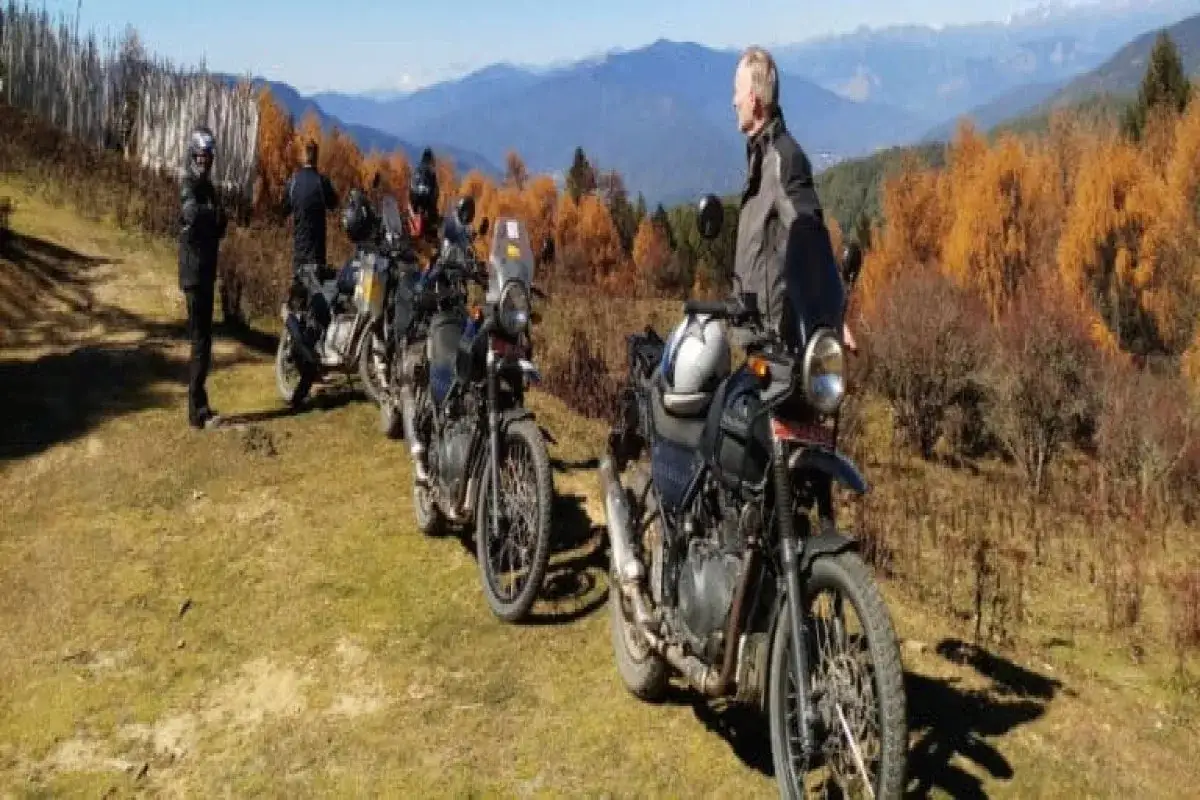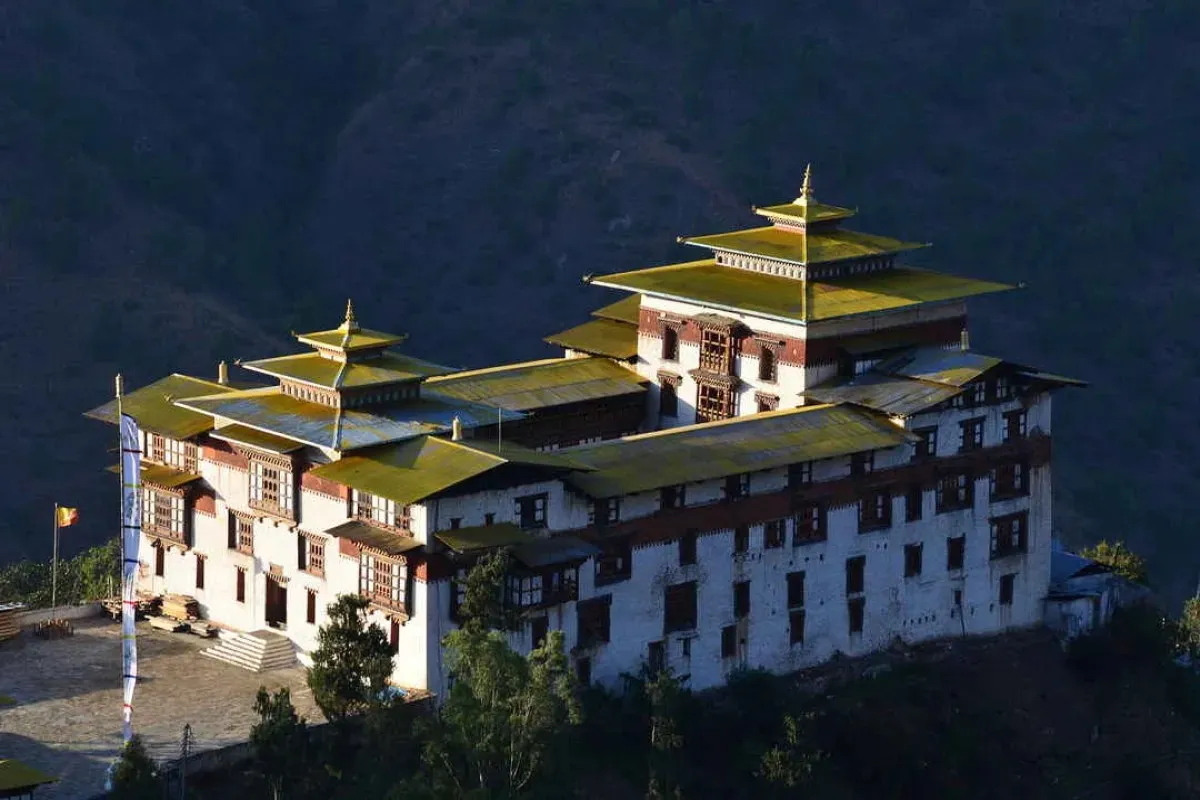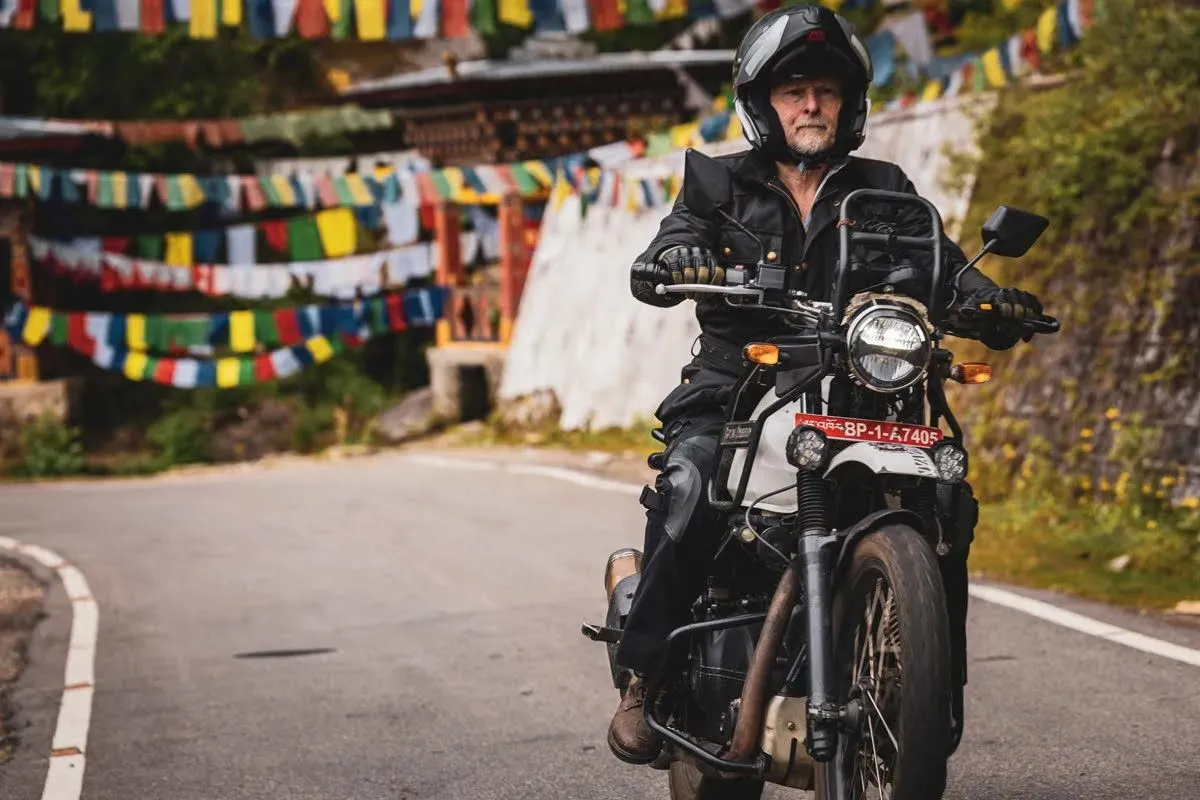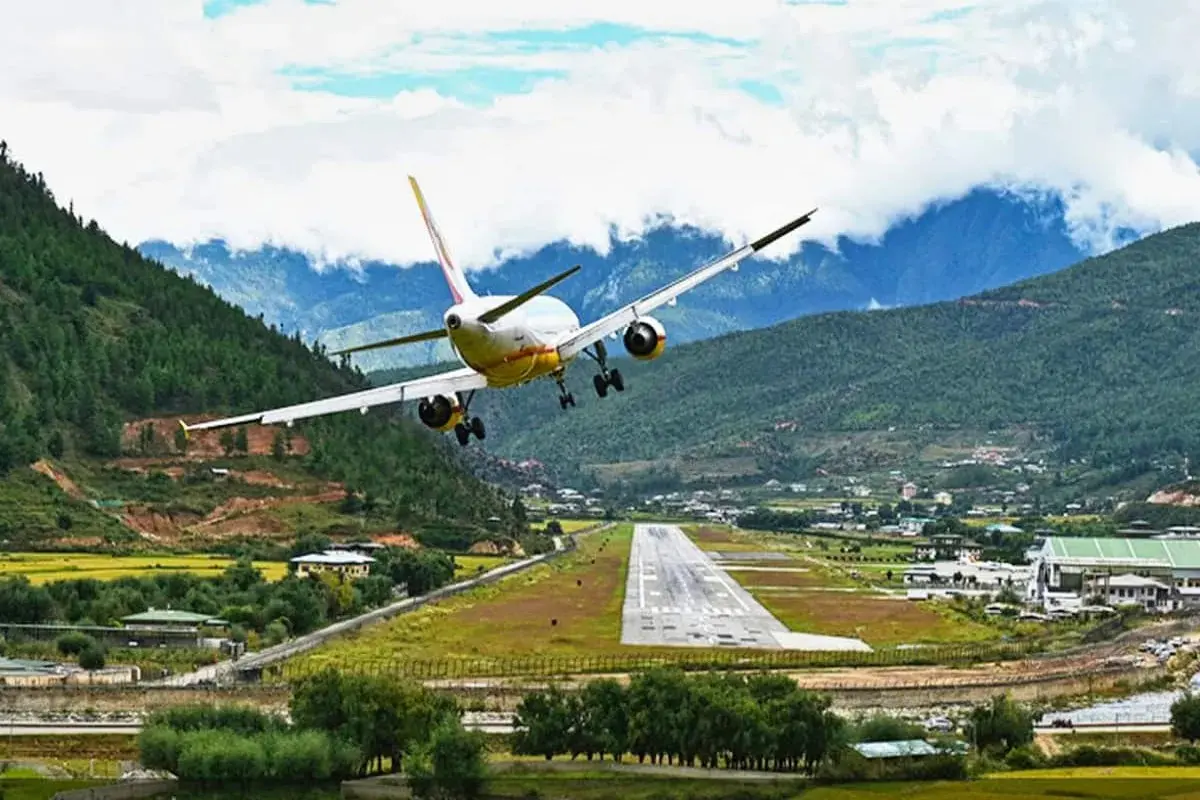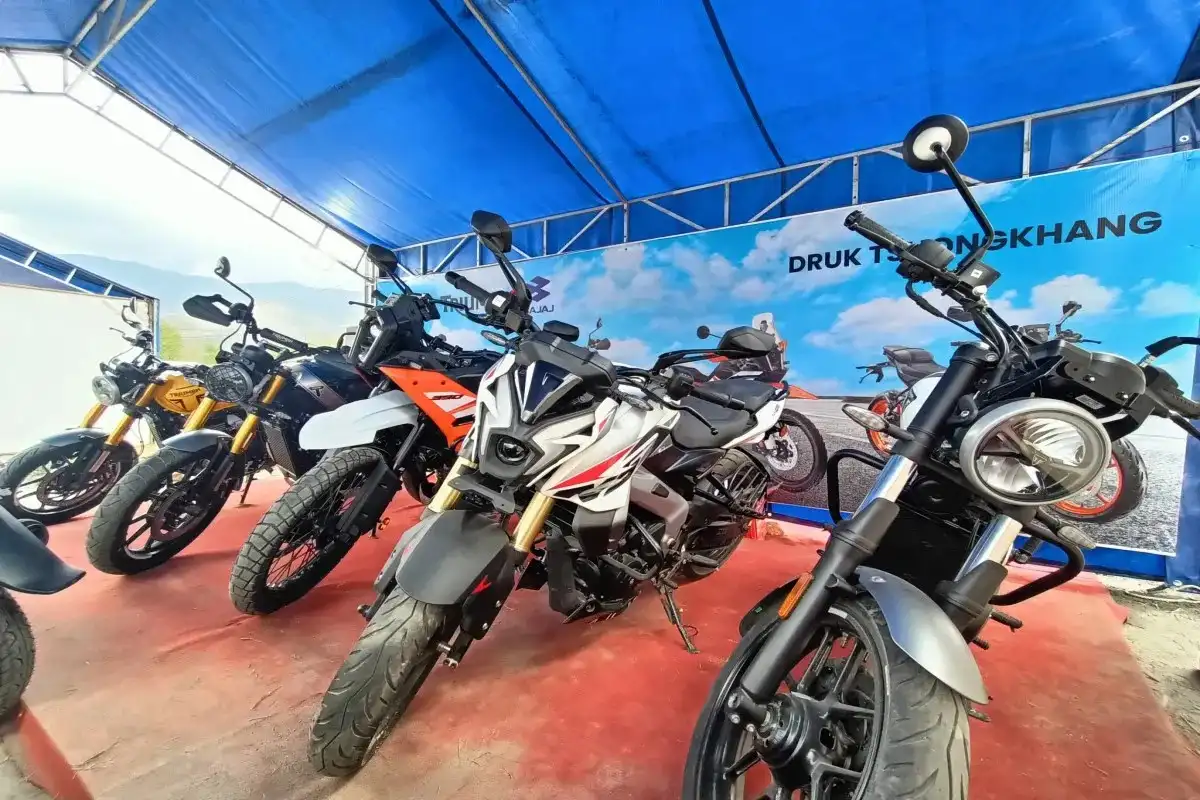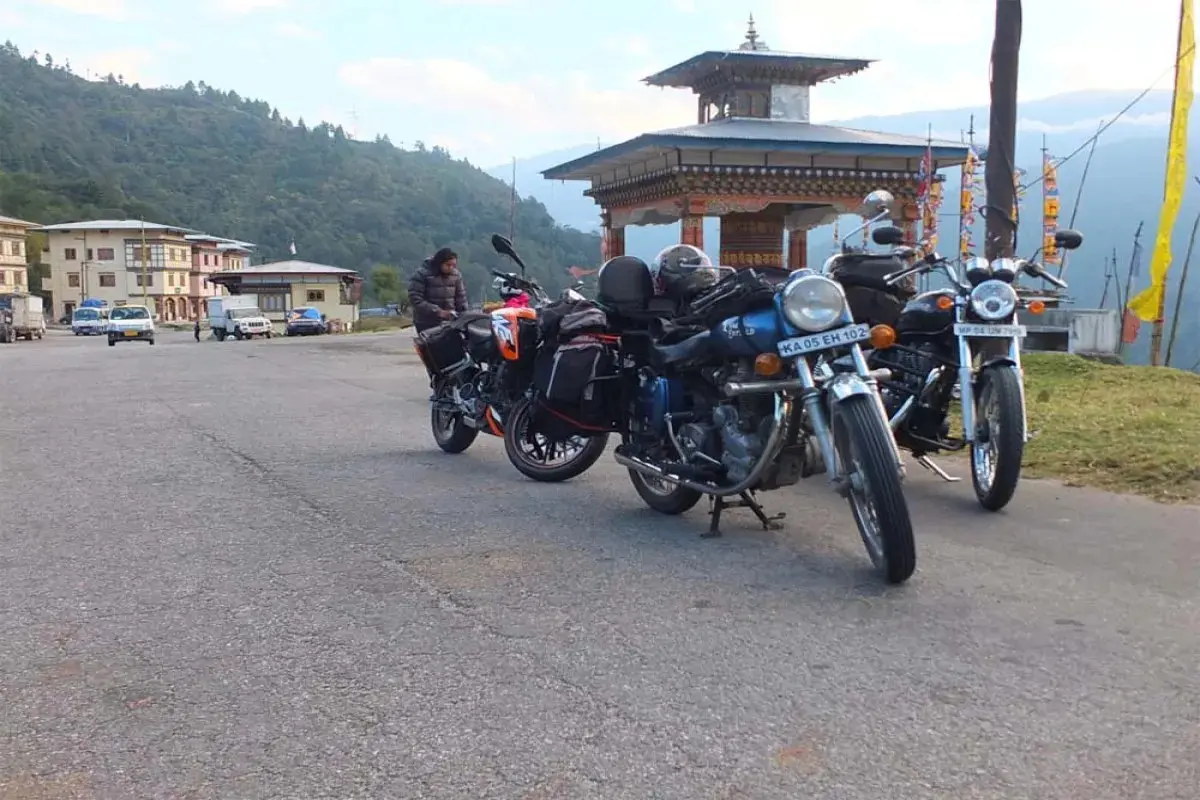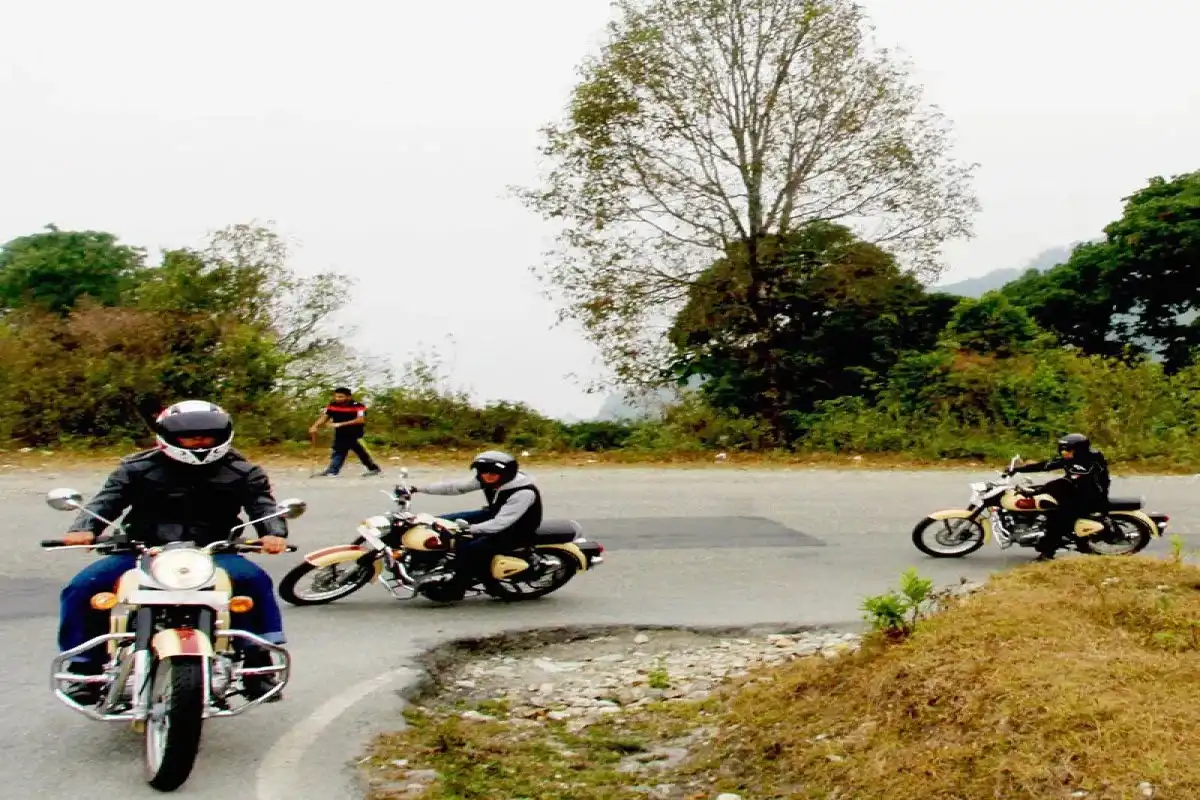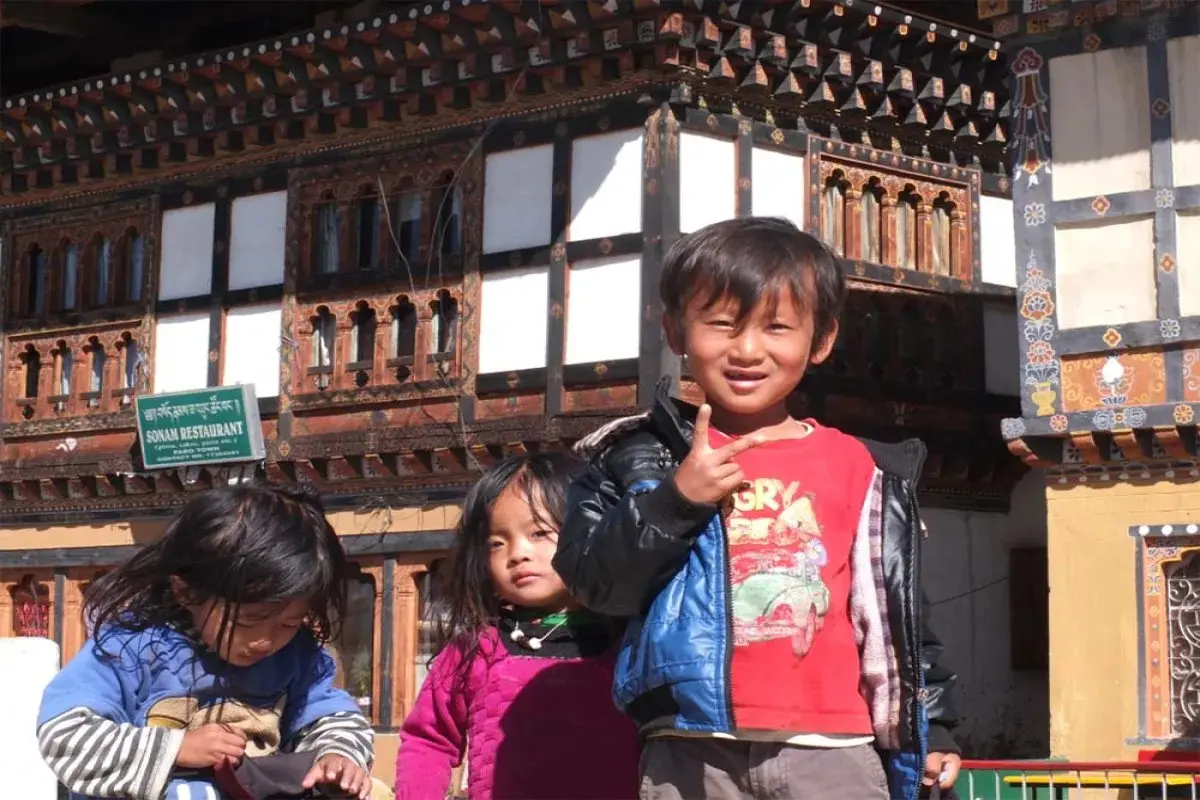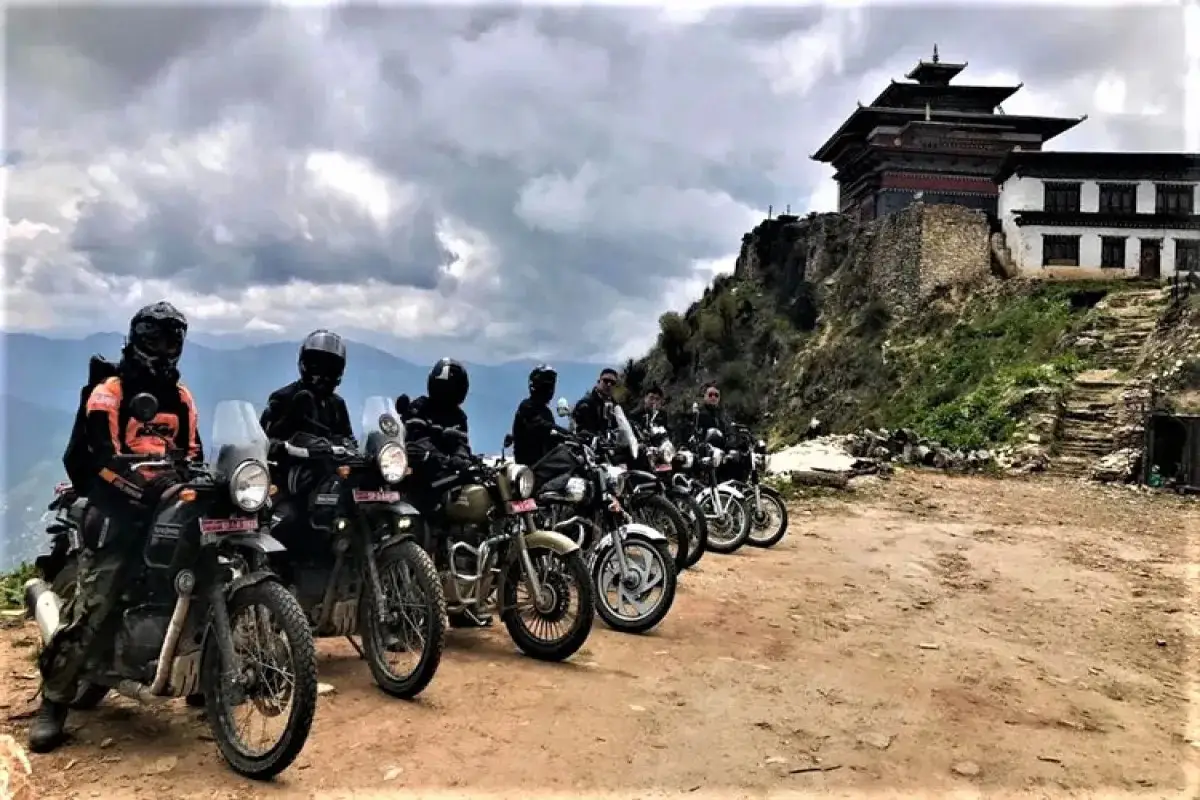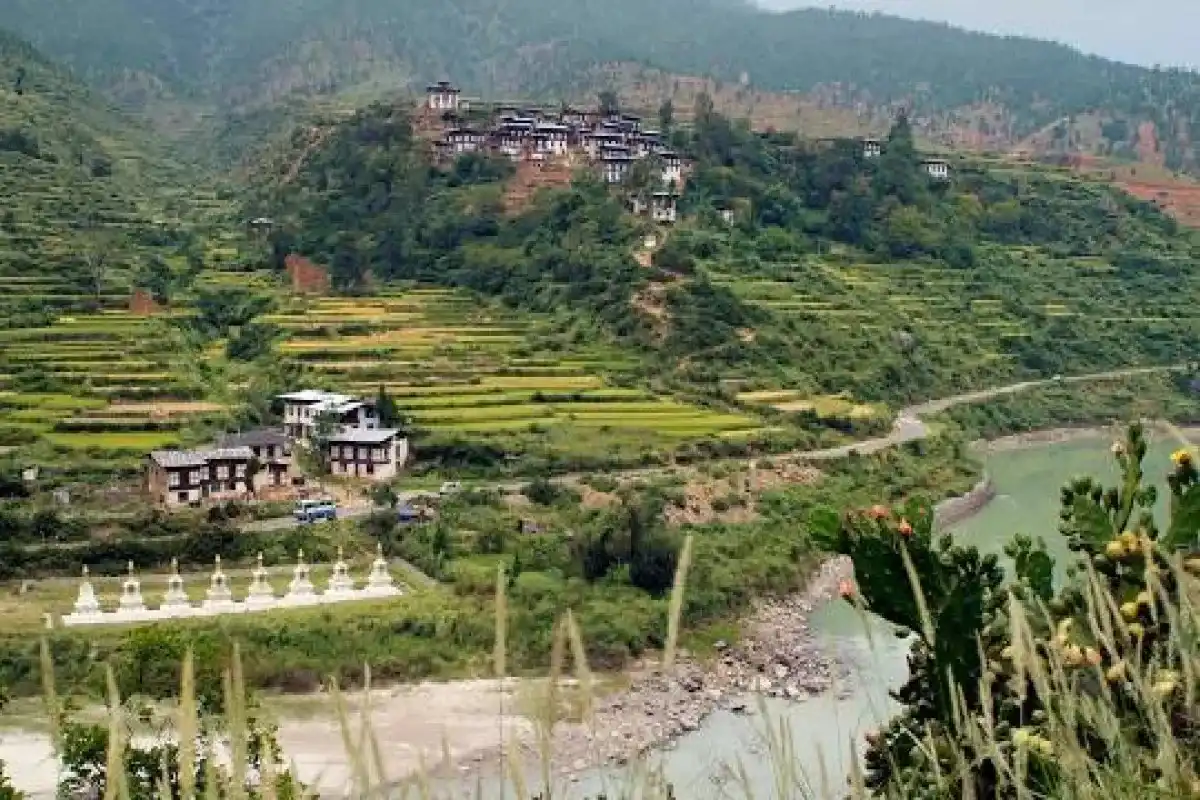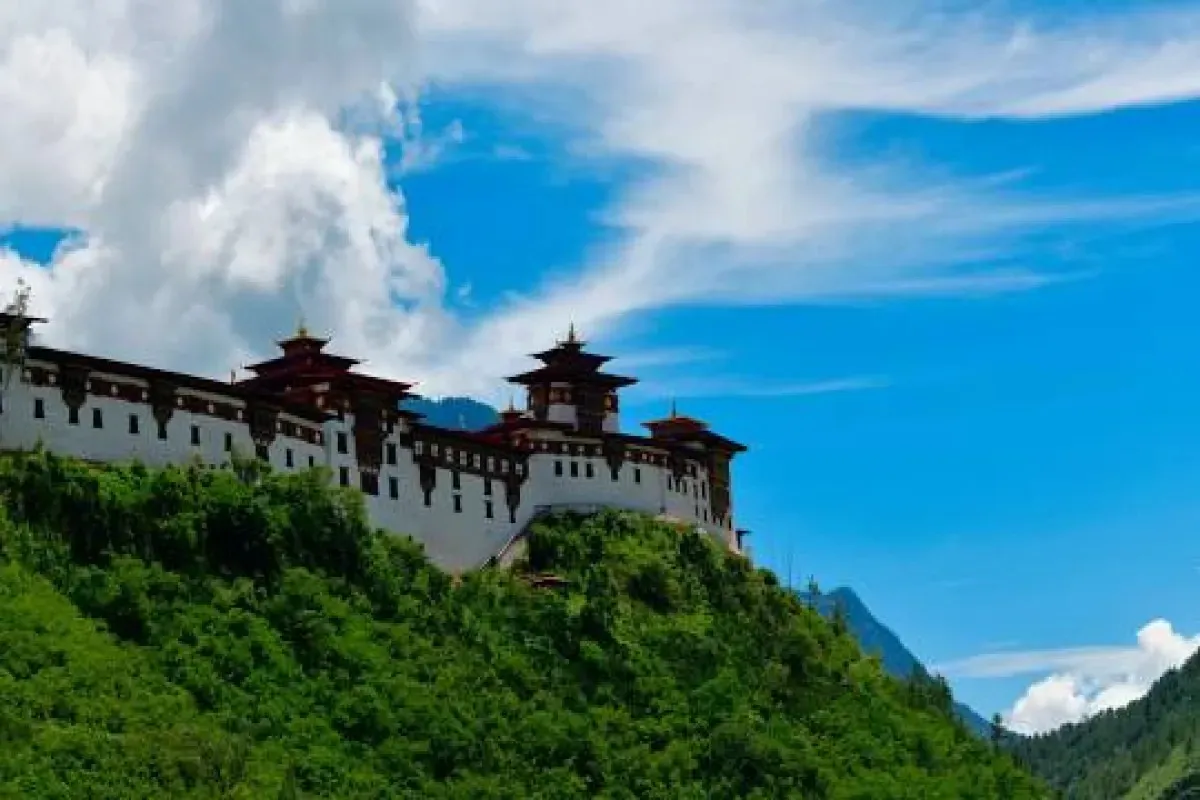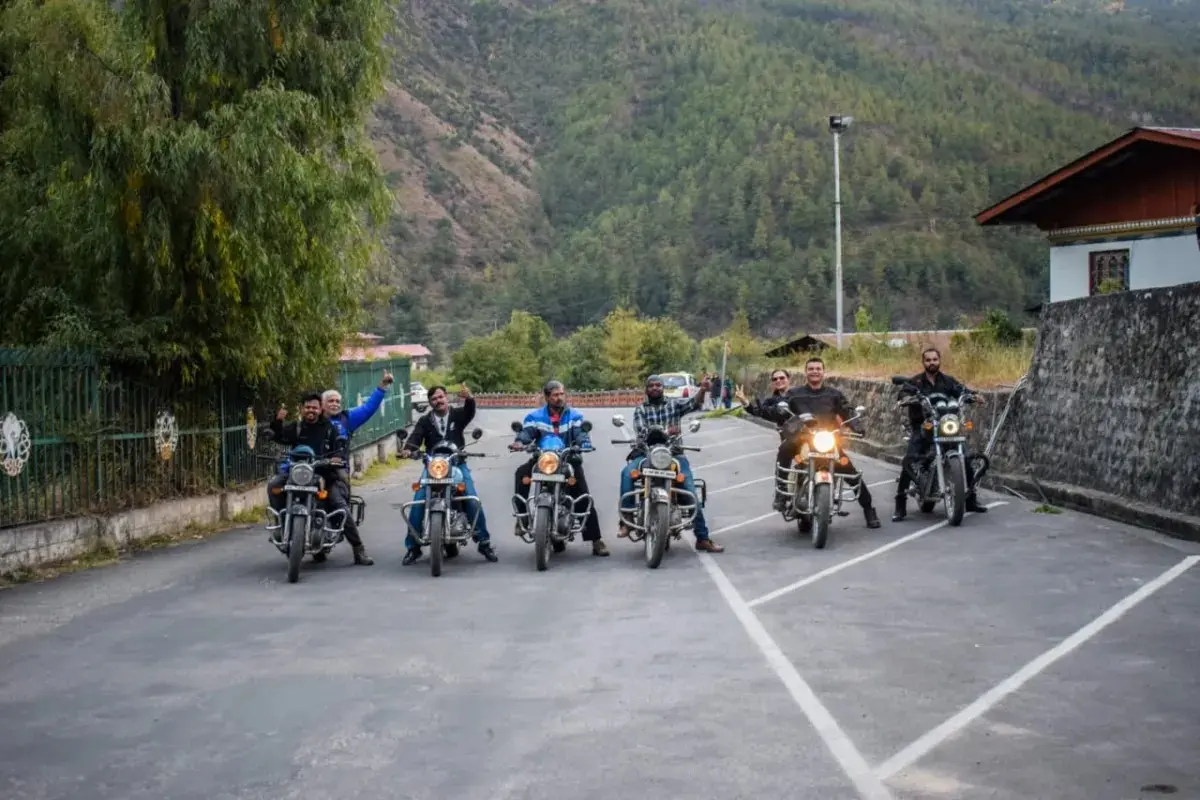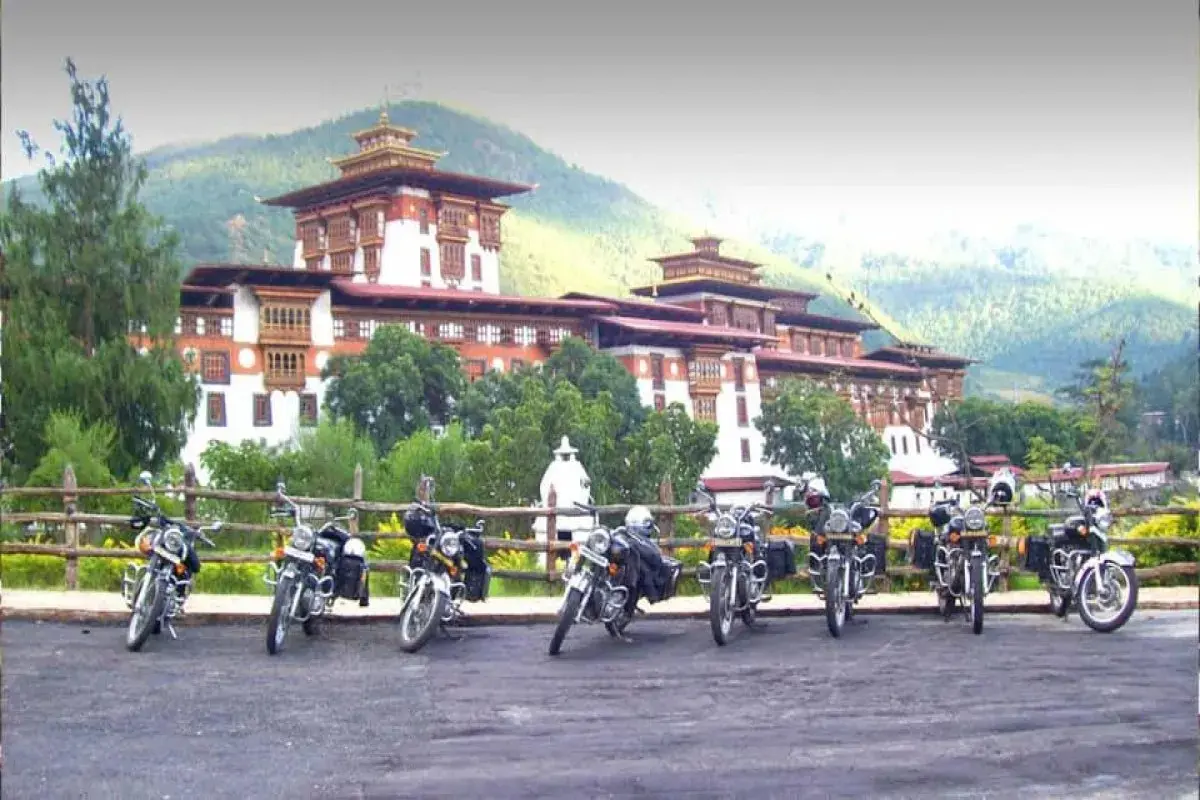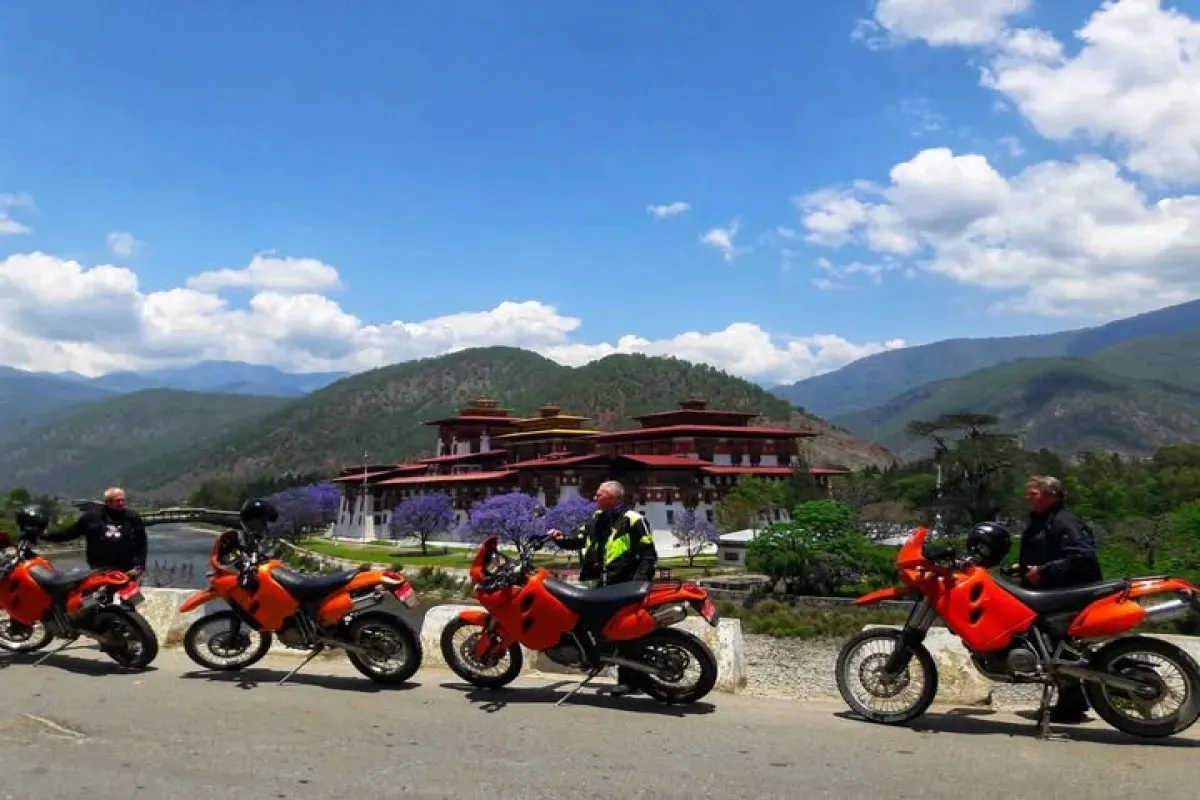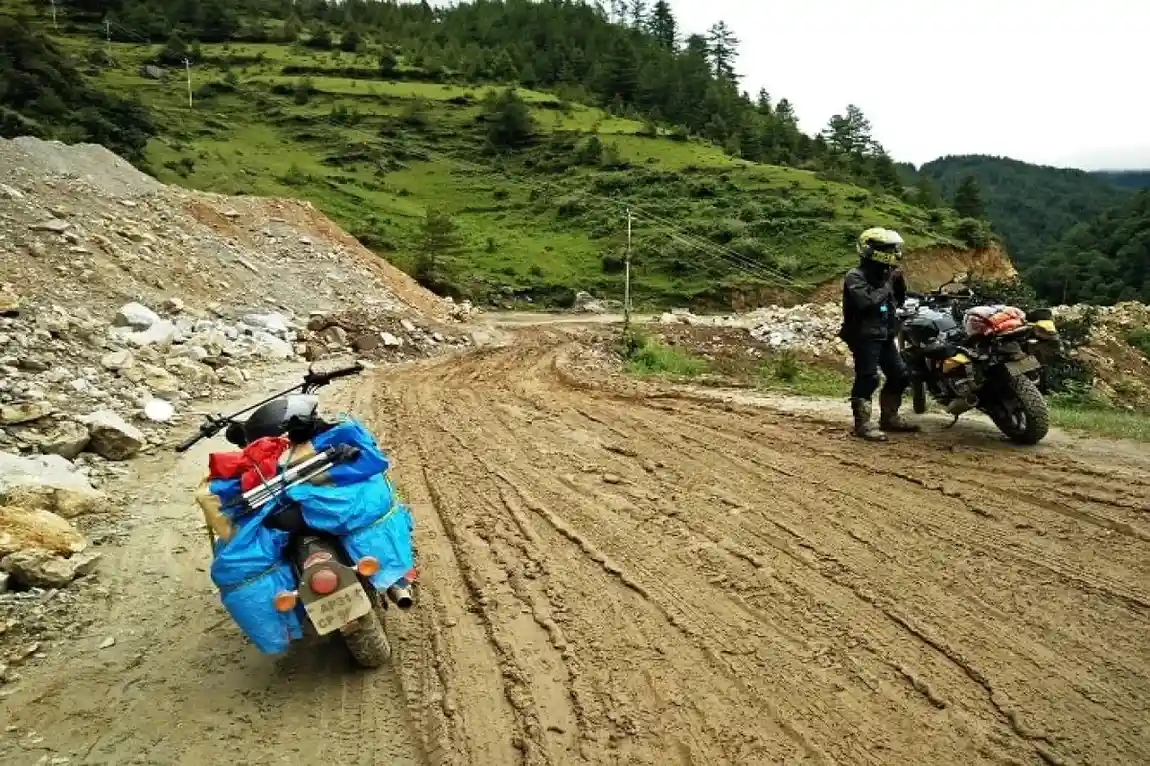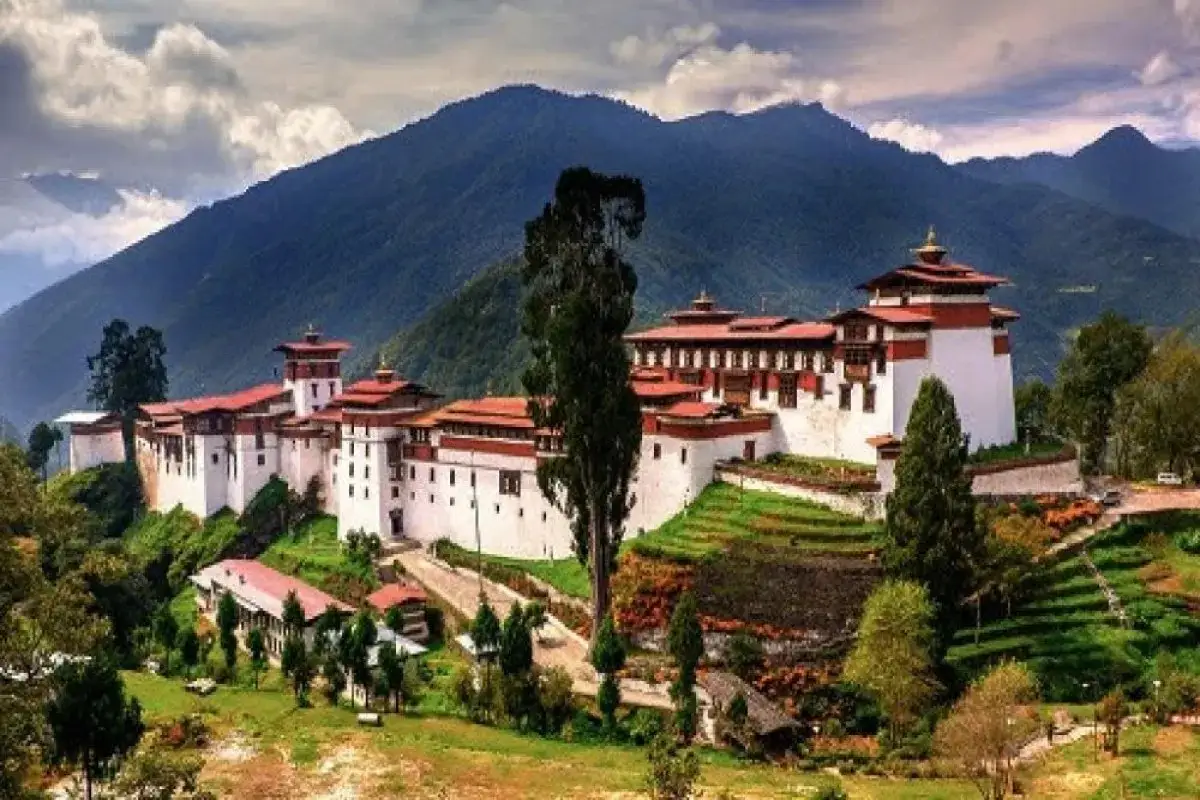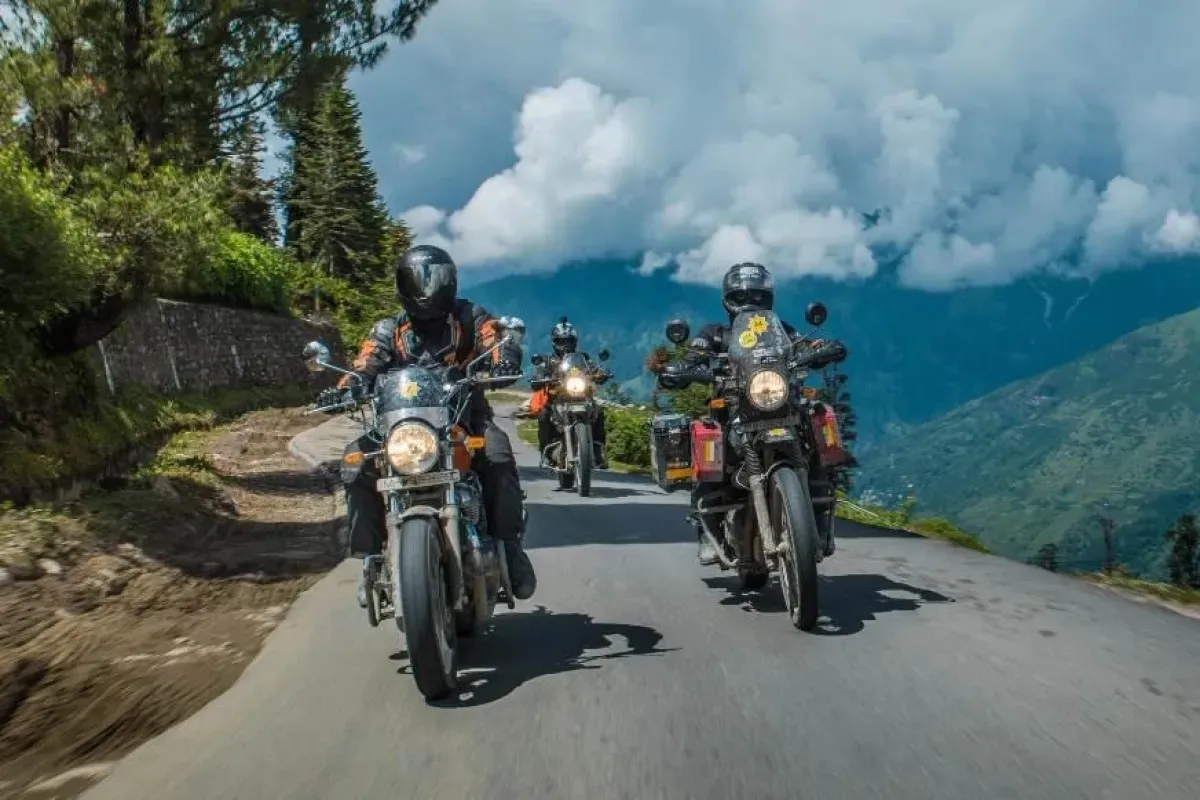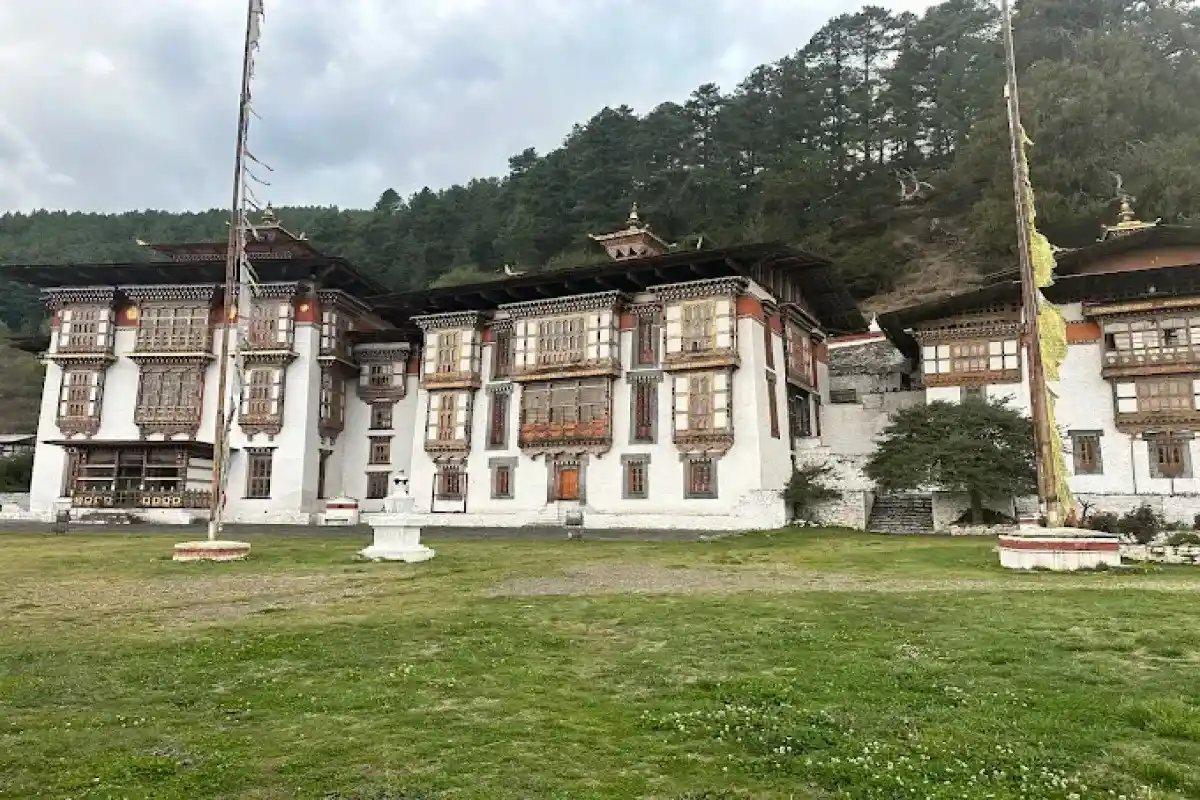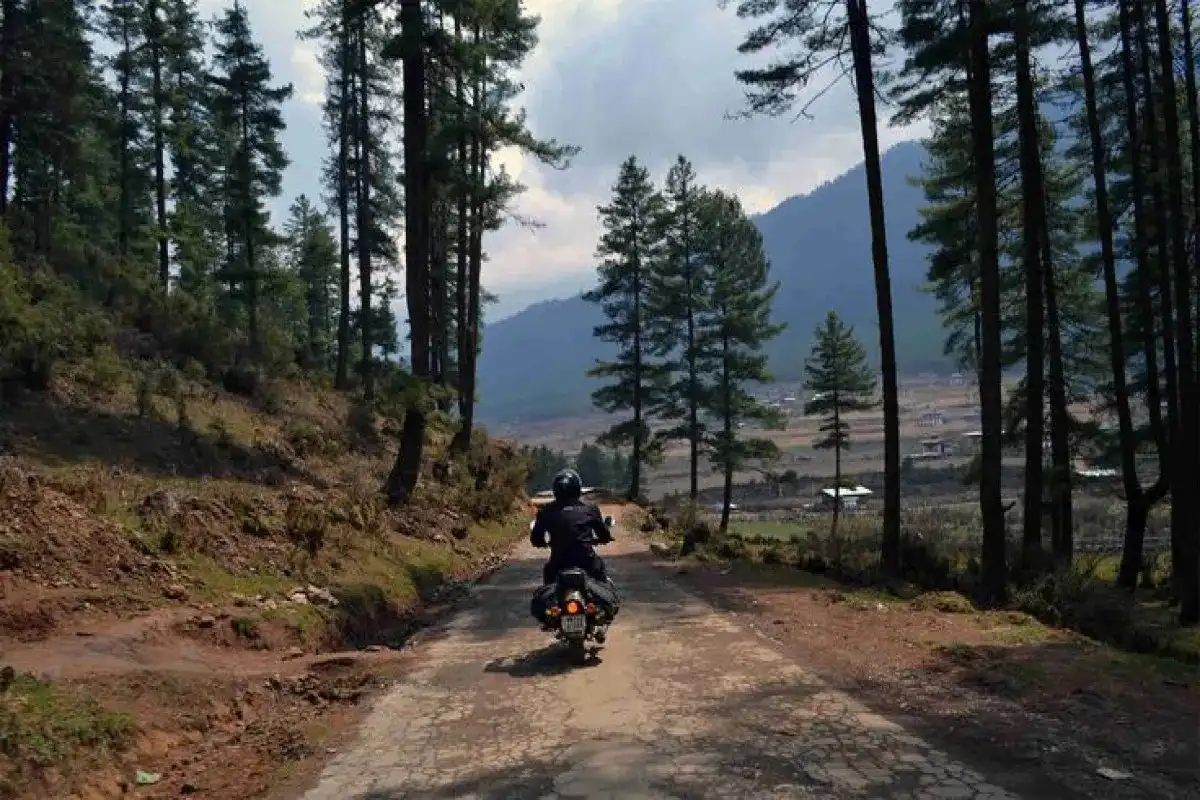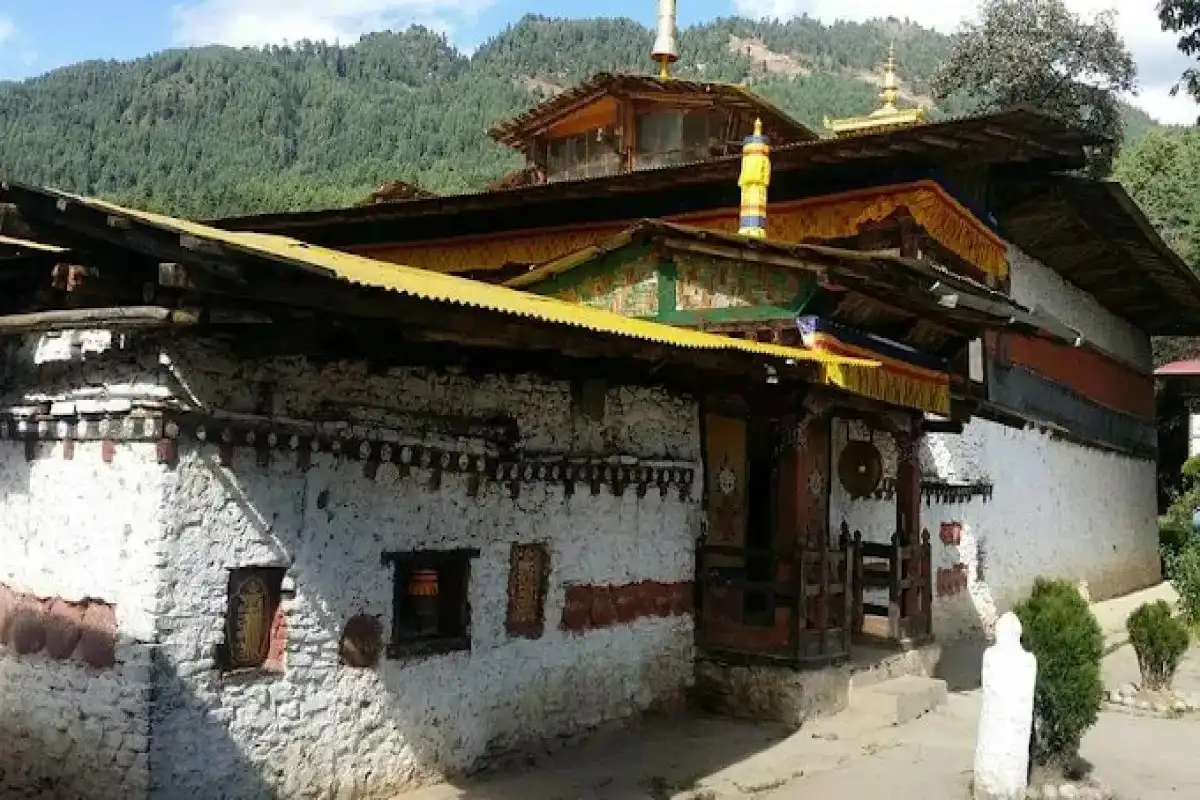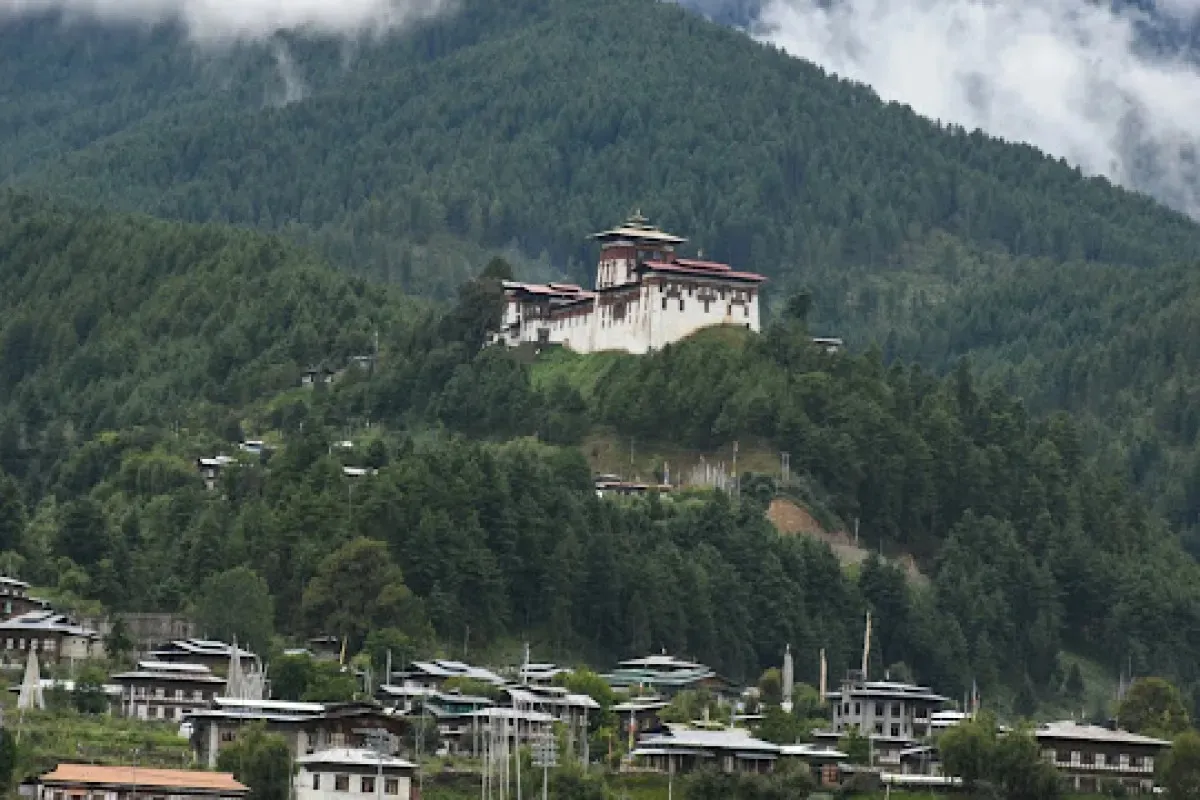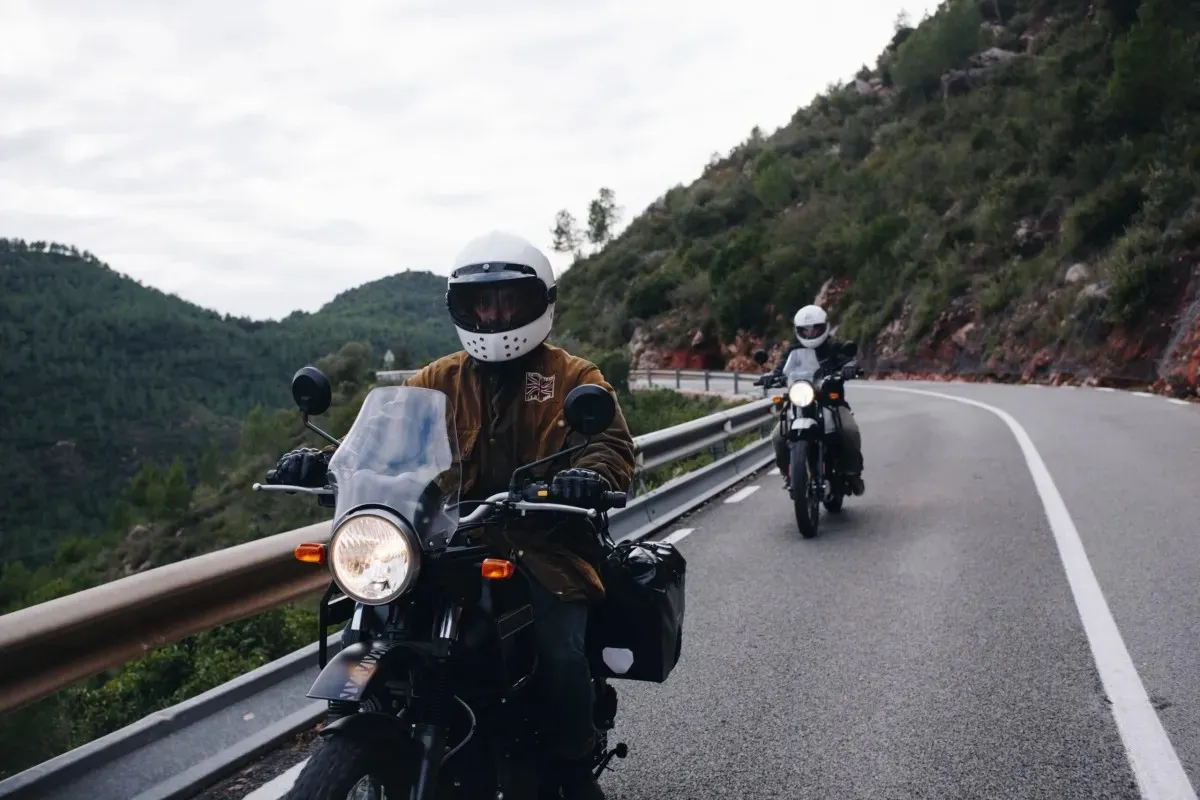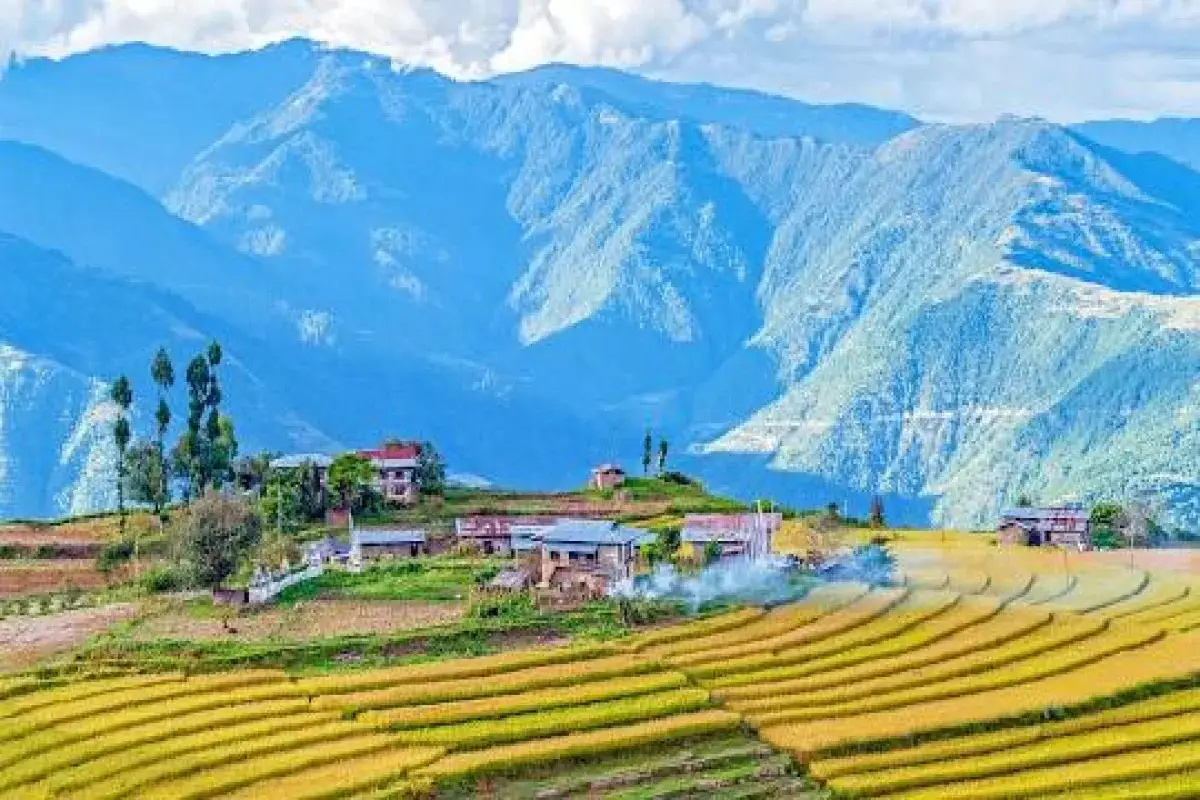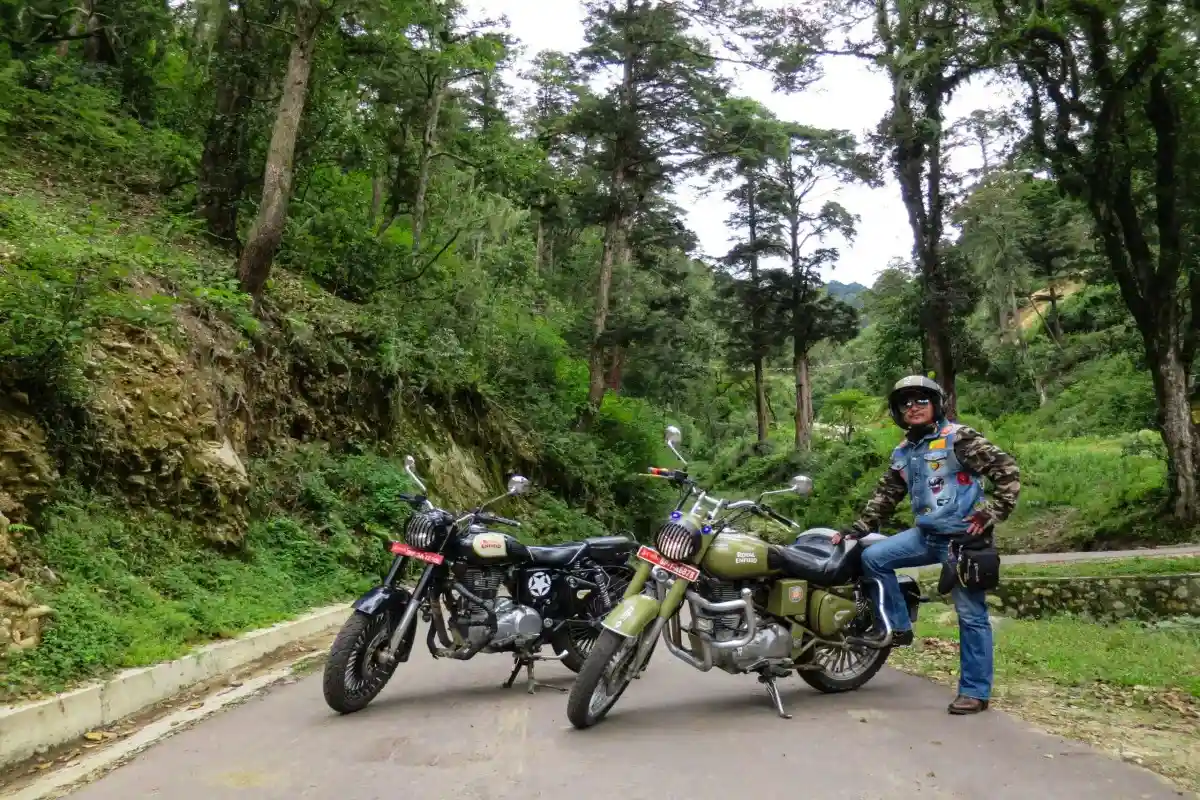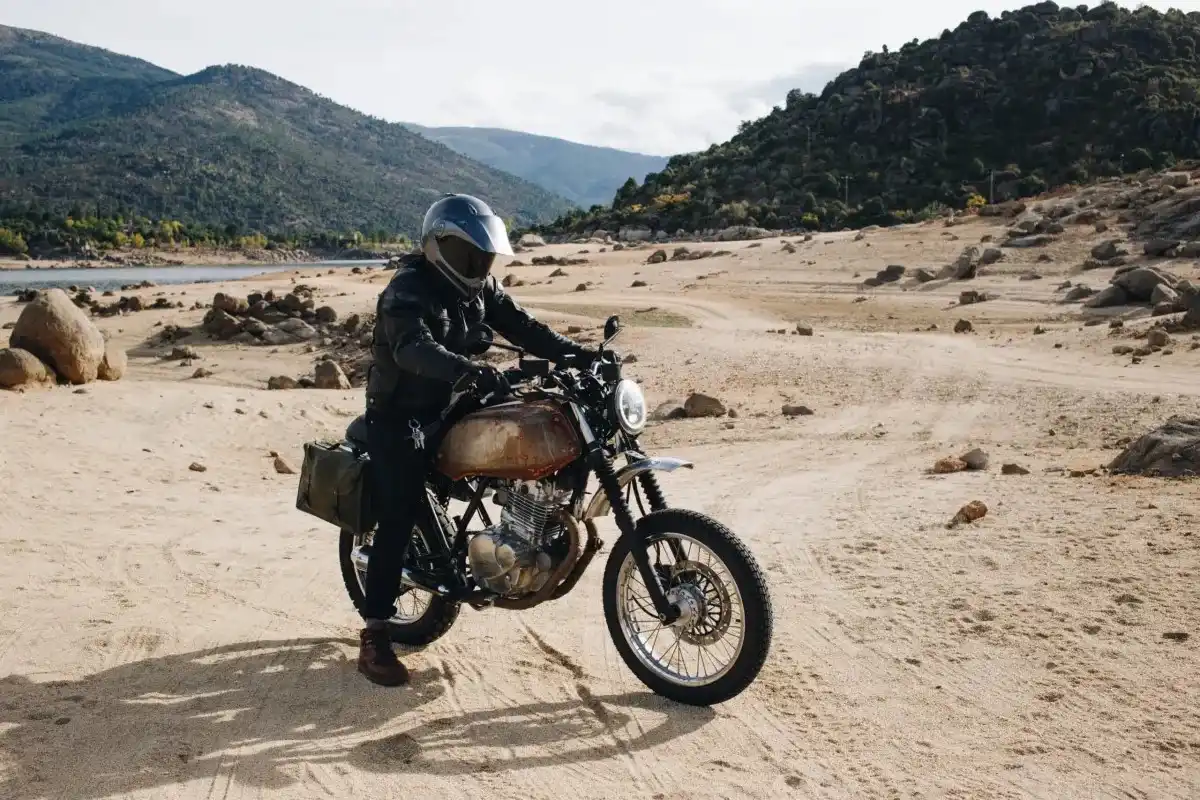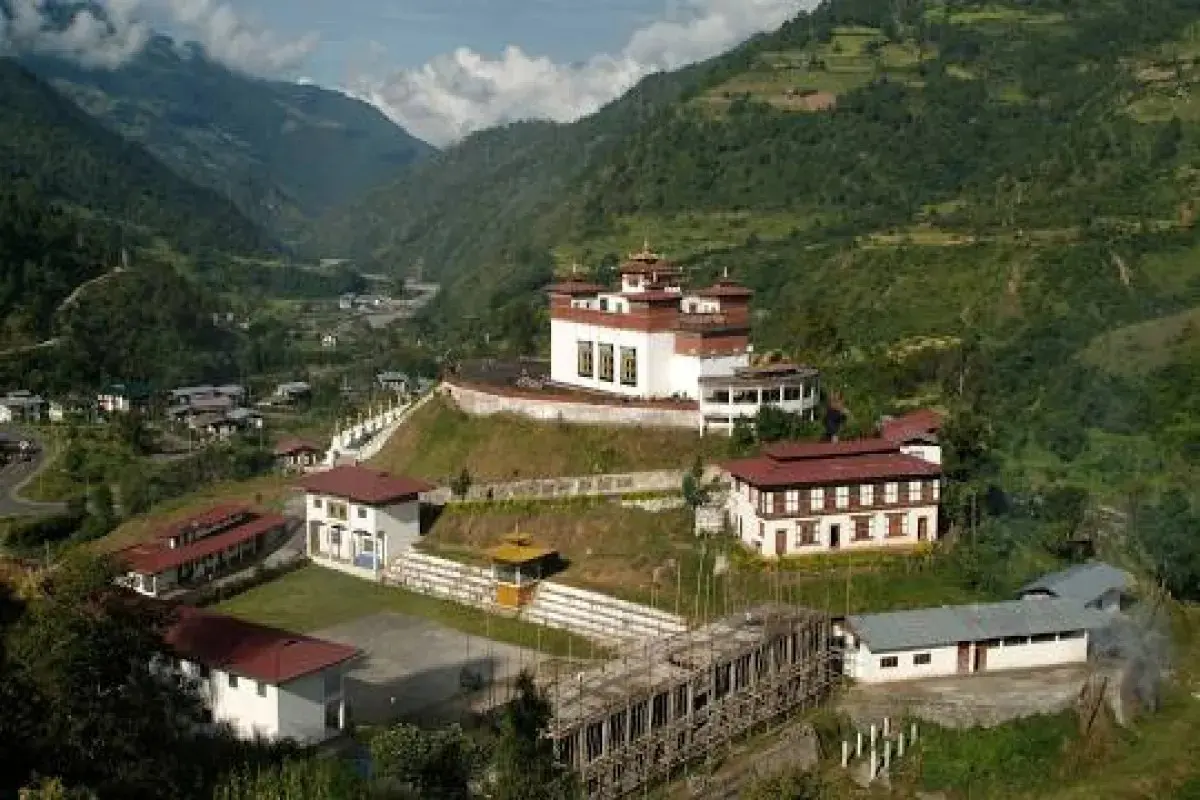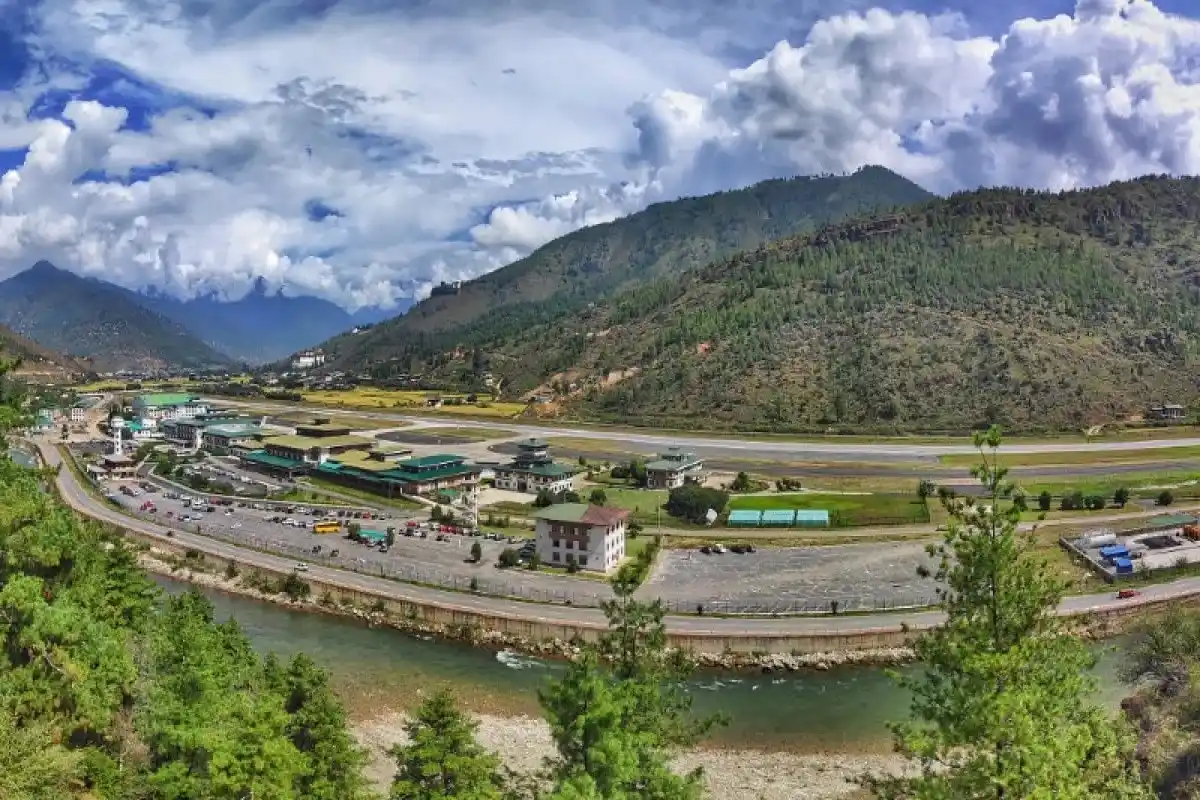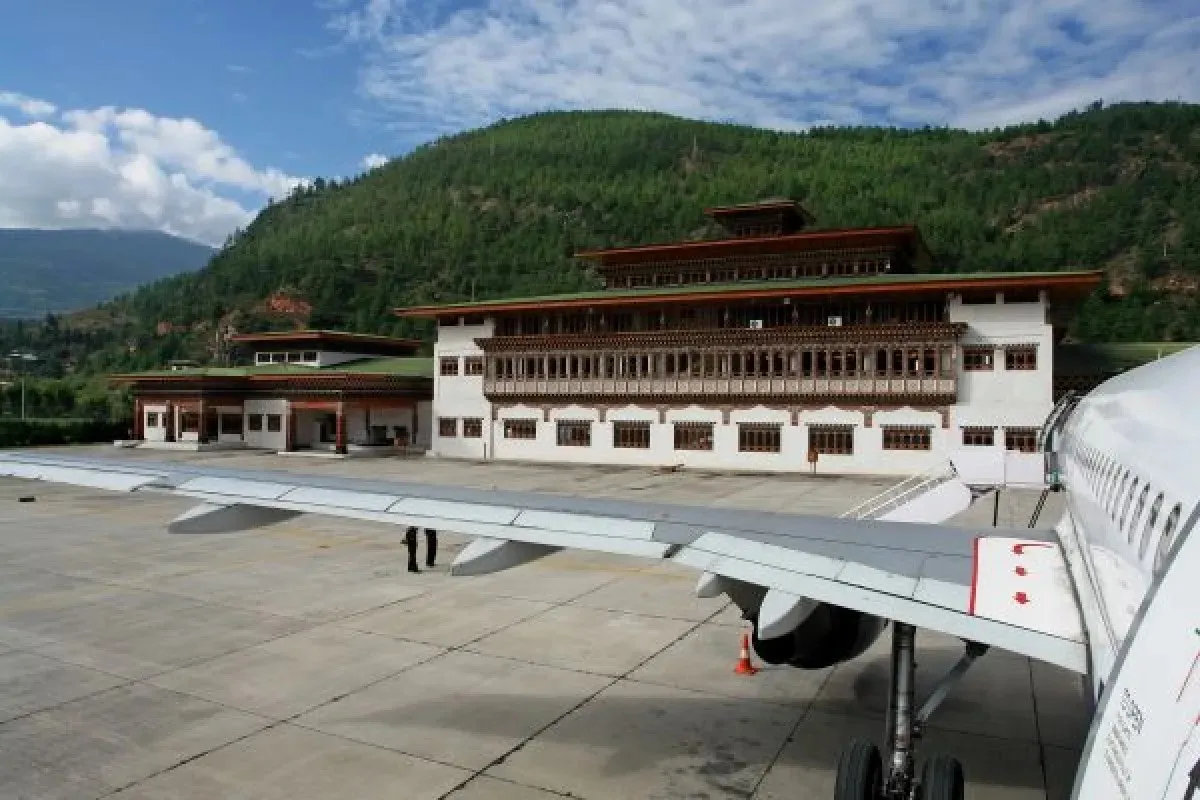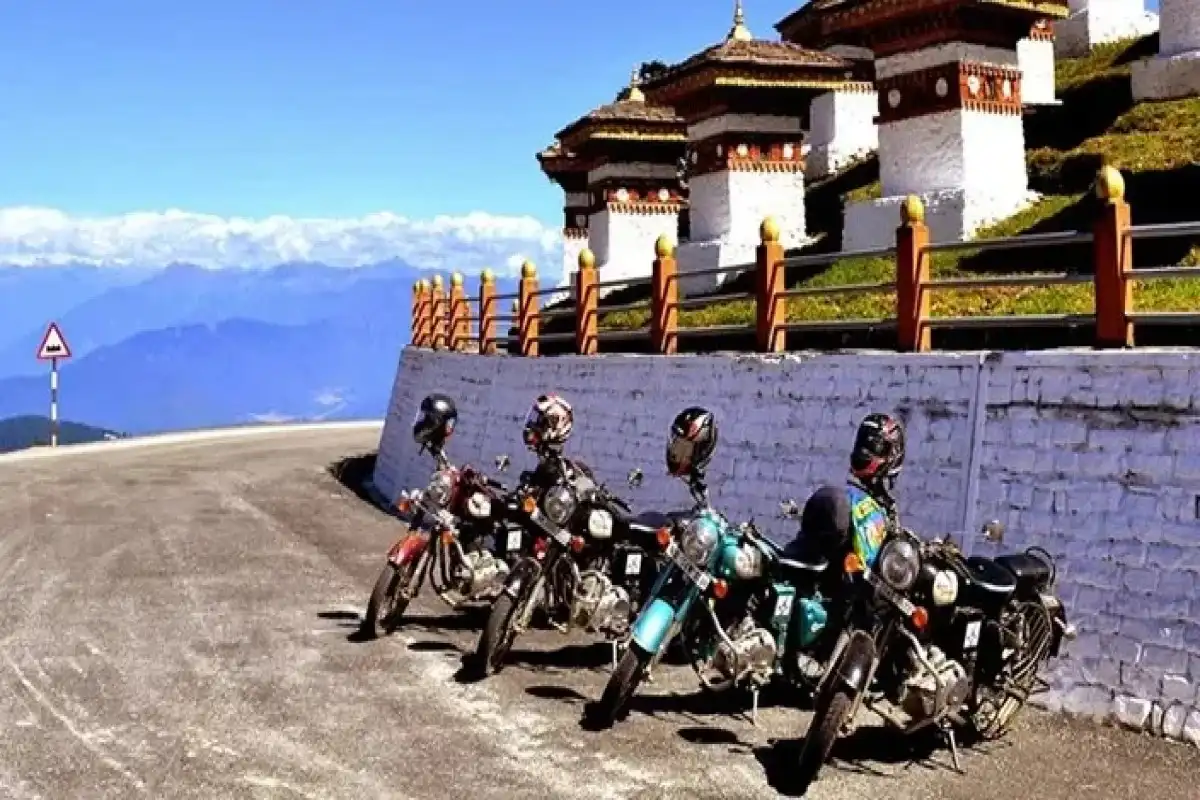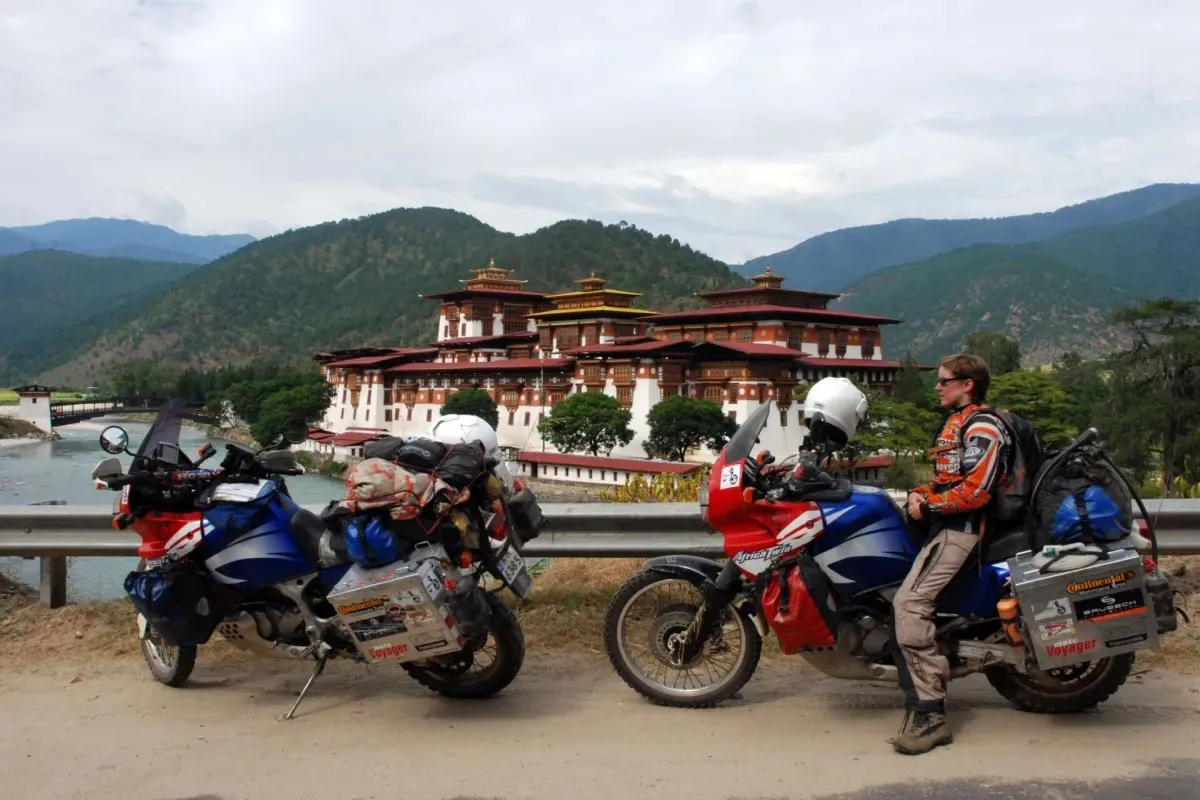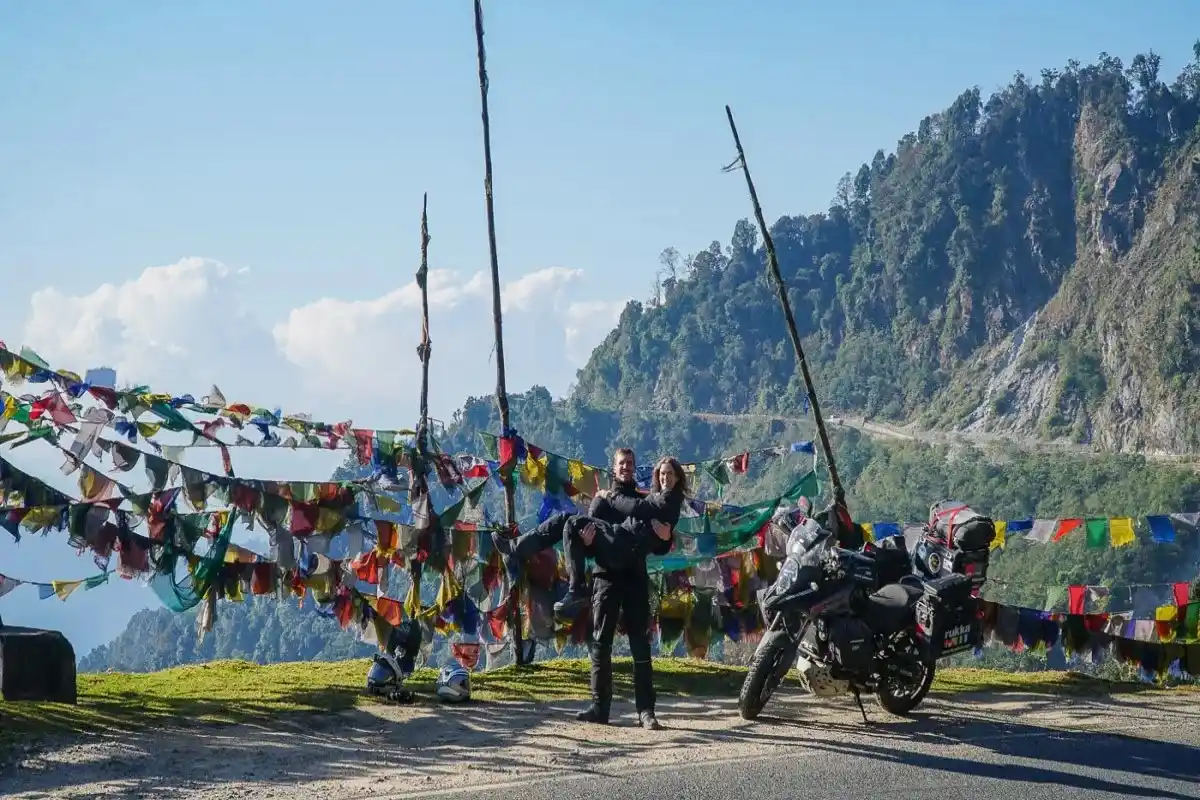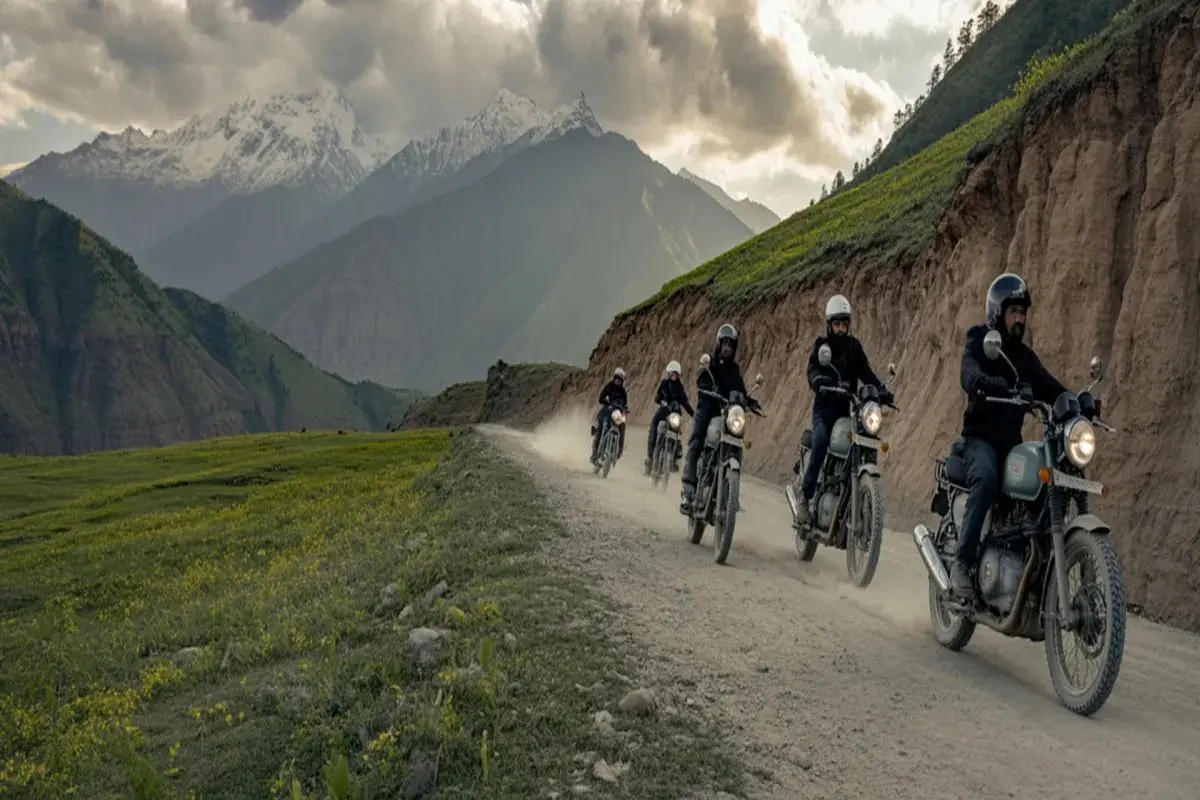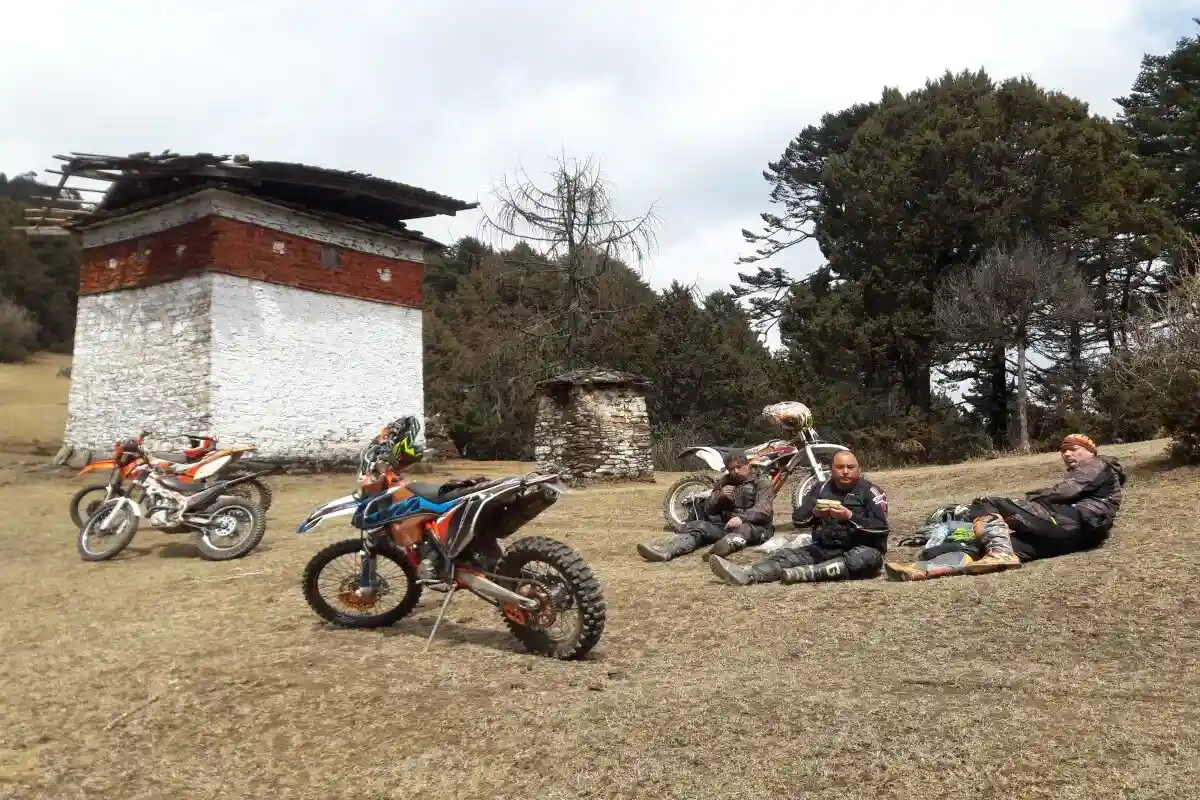The Great Bhutan Motorbike Rally: Eastern Bhutan Exploration - 10 Days
Bhutan is a very beautiful place, and we are organising a bike rally to familiarise you with its beauty. This motorbike rally in Eastern Bhutan offers a view of the beauty of nature and remote regions. Ride through the mountains to discover Bhutan's beauty on two wheels.
Who Should Join the Eastern Bhutan Motorbike Rally?
This rally is designed for riders who love meaningful adventure. To see if you fit in the category, check out the list below:
- Medium to professional rider
- Thrill and adventure lovers who enjoy mountain and altitude changes.
- Cultural enthusiasts seeking deep experiences in traditional Bhutanese communities.
- Travellers promoting a Sustainable approach who appreciate the untouched beauty of Bhutan.
- Solo riders looking to be part of an adventurous trip.
Trip Overview
Experience a lifetime experience of seeing the untouched wilderness of Bhutan’s eastern frontier. The Great Bhutan Motorbike Rally is the most thrilling journey to embark on, offering some of the most scenic views and a spiritual and culturally rich landscape that can only be experienced in dreams. Whether you are a solo traveller, an adventure freak, a motorbike rider, engaged in touring clubs, a seasoned off-roader, or even a cultural enthusiast, this is the best opportunity you can grab, which takes you to an ultimate escape. This rally offers much more than what tourist trails can provide to experience Bhutan. You can see mesmerising mountains, traditional villages, decades-old monasteries, and the authentic nature of Bhutanese hospitality all on just two wheels.
Highlights of The Great Bhutan Motorbike Rally
The Great Bhutan Motorbike Rally let the travellers experience Bhutan’s most untouched eastern regions,discover Local Communities and Historic Monasteries,visit historic monasteries like Trashigang Dzong and experience Himalayan Hospitality Away from Tourist Trails.
Experience Bhutan’s most untouched eastern regions
The eastern region remains the least-traveled region across the country, offering bikers a raw and authentic look at the place, far from the crowds of Bhutanese tourists. Here, the roads lead to valleys, mountains, and villages. In these villages, cultures are still alive. As you gradually pass through the forests, cliffs, and farmland, you’ll get to learn more about Bhutanese communities that are still engrossed in culture and spirituality.
Discover Local Communities and Historic Monasteries
Bhutan is full of peaceful, self-sufficient, joyful villages that appear to be back in time. You get a fantastic view of Bhutanese life, unaffected by urbanisation, when you ride through these areas. You can stop by Radhi village, known for its exquisite handwoven textiles, or Zarphu village, which is still not popular among many people, where you can see many agricultural practices. You’ll also find ancient monasteries either hidden within valleys or at the top of the cliff, where spiritual practices are still alive and are a spiritual hub.
Climbing Through Thrumshing La (3,780 m)
Experience the thrills of climbing through Thrumshing La, which offers you panoramic views and switchback roads. Thrumshing La is Bhutan’s second-highest motorable pass. At the peak, the air is thin and crisp, and the view is just awe-inspiring. You’ll get to see the elegant view and the blue skies filled with clouds. This will not just be a ride but a way of motorbike adventures.
Explore the Concept of Cultural Immersion in Mongar, Trashigang, and Trashi Yangtse
The eastern part of Bhutan mesmerises tourists by showcasing its culture, history, and hospitality. In Mongar, you can see the mixture of tradition and modernity going well with each other. Trashigang is Bhutan’s largest district. It is popularly known for hosting local markets and festivals that have been taken hand in hand for many years, with the perfect masked dances that come alive. Similarly, in Trashi Yangtse, you can get to see craft workers creating traditional paper and woodwork, which are very valuable, and the old monks hosting spiritual events in old monasteries.
Visit historic monasteries like Trashigang Dzong
Bhutan is popular for its dzongs. These old fort-type buildings. They’ve been there for ages, and they’re kind of everywhere. Trashigang Dzong stood out to us, maybe because it’s so old; it is believed that it has been there since 1659. It sits right above the Gamri River. It’s not fancy, but it has this calm and strong feeling to it. Lhuentse Dzong is another one. It’s harder to get to, deep in the forest and all. It is surrounded by cliffs and trees, which makes it a beautiful place in imagination as well as in real life. Visiting these places gives the tourists extensive knowledge of Bhutan’s history and sense of spirituality.
Experience Himalayan Hospitality Away from Tourist Trails
The magic of Eastern Bhutan is not just in its landscape, but in its people. Riders are not just welcomed to the hotels but to their homes. You can experience a place where family shares stories, aromatic home-cooked meals, and everyday life stories. This journey will introduce you to Bhutanese warmth in its purest form. Whether it’s a bath after a long ride, a homemade feast with seasonal vegetables, or joining in a village event, the people’s love you’ll get here will be the most memorable part of the journey. You’ll find a home just away from home.
Things to Do on This Trip
This trip offers activities like ride through diverse terrains,visiting historic monasteries and Dzongs,experiencing local markets and traditional crafts.
Ride Through Diverse Terrains
The roads of the East are adventures in themselves. Riders will ride on a mix of land types from mountains such as Thrumshing La and through lush forest, as well as open skies. The geographies of eastern land are both a challenge and a reward to the riders. For off-roaders and long-distance touring clubs, the Bhutan bike trails have everything from smooth roads to rugged roads, making it a wholesome ride through less-travelled Himalayan landscapes.
Visit Historic Monasteries and Dzongs
Go to Bhutan’s spiritual and ancient sites such as Trashigang Dzong, Lhuentse Dzong, and Kurje Lhakhang. These places are on top of the cliffs or are inside forests or valleys. Visiting these sites will give you adventure and thrill too. Monks' mantras echoing, prayer wheels, and the scent of Monasteries create a peaceful atmosphere. You can visualize many things because the environment is so calm there. This adds more meaning to your Bhutan tour.
Experience Local Markets and Traditional Crafts
Experience Eastern Bhutan’s cultural values in local markets where people sell handwoven textiles, traditional Bhutanese delicacies, and handcrafted arts and crafts. These things are made by the local people living in the eastern part of the country. In villages like Radhi and Yangtse, you’ll get the chance to see many art products such as textiles, wooden bowls, and sacred thangka paintings, which will leave you in awe. You can also take these things as souvenirs. These stops provide knowledge of Bhutanese culture and directly boost local economies by supporting local vendors.
Take Nature Walks in Sanctuaries
Replace your biking boots and wear hiking shoes. Have short nature walks in Bumdeling and Sakteng Wildlife Sanctuaries. These areas have protected many rare wildlife, such as red pandas, Himalayan monals, and blue sheep. Nature enthusiasts should not miss this golden opportunity to find new animals, plants, and sights of nature.
Savour Authentic Bhutanese Food and Hot Stone Baths
Bhutanese cuisine is a must-try when you are there. After a long day's ride, you may have ema datshi, red rice, or even buckwheat pancakes. The meals give comfort and warm ease to the aches endured moments ago. There are some guesthouses that provide hot stone baths. This is an ancient healing technique of heating river stones, which are put in herbal water and then placed on the body. While this method heals and relaxes the body, it also allows one to meditate on their journey, having just completed one of the most incredible biking routes in Asia.
Conclusion
In a nutshell, the Great Bhutan Motorbike Rally is a memorable trip that gives thrilling adventure, history, and knowledge of culture in one of the less-travelled regions of Bhutan. This region is no doubt one of the places that one must travel to once in a lifetime. So, this is the golden opportunity to grab. Over the period of ten days, you will experience traditions, amazing landscapes, and the spirituality of Bhutan. Don’t just visit Bhutan, ride it, feel it, and let it be engraved in you. The Great Bhutan Motorbike Rally awaits.
Experience a lifetime experience of seeing the untouched wilderness of Bhutan’s eastern frontier. The Great Bhutan Motorbike Rally is the most thrilling journey to embark on, offering some of the most scenic views and a spiritual and culturally rich landscape that can only be experienced in dreams. Whether you are a solo traveller, an adventure freak, a motorbike rider, engaged in touring clubs, a seasoned off-roader, or even a cultural enthusiast, this is the best opportunity you can grab, which takes you to an ultimate escape. This rally offers much more than what tourist trails can provide to experience Bhutan. You can see mesmerising mountains, traditional villages, decades-old monasteries, and the authentic nature of Bhutanese hospitality all on just two wheels.
Highlights of The Great Bhutan Motorbike Rally
The Great Bhutan Motorbike Rally let the travellers experience Bhutan’s most untouched eastern regions,discover Local Communities and Historic Monasteries,visit historic monasteries like Trashigang Dzong and experience Himalayan Hospitality Away from Tourist Trails.
Experience Bhutan’s most untouched eastern regions
The eastern region remains the least-traveled region across the country, offering bikers a raw and authentic look at the place, far from the crowds of Bhutanese tourists. Here, the roads lead to valleys, mountains, and villages. In these villages, cultures are still alive. As you gradually pass through the forests, cliffs, and farmland, you’ll get to learn more about Bhutanese communities that are still engrossed in culture and spirituality.
Discover Local Communities and Historic Monasteries
Bhutan is full of peaceful, self-sufficient, joyful villages that appear to be back in time. You get a fantastic view of Bhutanese life, unaffected by urbanisation, when you ride through these areas. You can stop by Radhi village, known for its exquisite handwoven textiles, or Zarphu village, which is still not popular among many people, where you can see many agricultural practices. You’ll also find ancient monasteries either hidden within valleys or at the top of the cliff, where spiritual practices are still alive and are a spiritual hub.
Climbing Through Thrumshing La (3,780 m)
Experience the thrills of climbing through Thrumshing La, which offers you panoramic views and switchback roads. Thrumshing La is Bhutan’s second-highest motorable pass. At the peak, the air is thin and crisp, and the view is just awe-inspiring. You’ll get to see the elegant view and the blue skies filled with clouds. This will not just be a ride but a way of motorbike adventures.
Explore the Concept of Cultural Immersion in Mongar, Trashigang, and Trashi Yangtse
The eastern part of Bhutan mesmerises tourists by showcasing its culture, history, and hospitality. In Mongar, you can see the mixture of tradition and modernity going well with each other. Trashigang is Bhutan’s largest district. It is popularly known for hosting local markets and festivals that have been taken hand in hand for many years, with the perfect masked dances that come alive. Similarly, in Trashi Yangtse, you can get to see craft workers creating traditional paper and woodwork, which are very valuable, and the old monks hosting spiritual events in old monasteries.
Visit historic monasteries like Trashigang Dzong
Bhutan is popular for its dzongs. These old fort-type buildings. They’ve been there for ages, and they’re kind of everywhere. Trashigang Dzong stood out to us, maybe because it’s so old; it is believed that it has been there since 1659. It sits right above the Gamri River. It’s not fancy, but it has this calm and strong feeling to it. Lhuentse Dzong is another one. It’s harder to get to, deep in the forest and all. It is surrounded by cliffs and trees, which makes it a beautiful place in imagination as well as in real life. Visiting these places gives the tourists extensive knowledge of Bhutan’s history and sense of spirituality.
Experience Himalayan Hospitality Away from Tourist Trails
The magic of Eastern Bhutan is not just in its landscape, but in its people. Riders are not just welcomed to the hotels but to their homes. You can experience a place where family shares stories, aromatic home-cooked meals, and everyday life stories. This journey will introduce you to Bhutanese warmth in its purest form. Whether it’s a bath after a long ride, a homemade feast with seasonal vegetables, or joining in a village event, the people’s love you’ll get here will be the most memorable part of the journey. You’ll find a home just away from home.
Things to Do on This Trip
This trip offers activities like ride through diverse terrains,visiting historic monasteries and Dzongs,experiencing local markets and traditional crafts.
Ride Through Diverse Terrains
The roads of the East are adventures in themselves. Riders will ride on a mix of land types from mountains such as Thrumshing La and through lush forest, as well as open skies. The geographies of eastern land are both a challenge and a reward to the riders. For off-roaders and long-distance touring clubs, the Bhutan bike trails have everything from smooth roads to rugged roads, making it a wholesome ride through less-travelled Himalayan landscapes.
Visit Historic Monasteries and Dzongs
Go to Bhutan’s spiritual and ancient sites such as Trashigang Dzong, Lhuentse Dzong, and Kurje Lhakhang. These places are on top of the cliffs or are inside forests or valleys. Visiting these sites will give you adventure and thrill too. Monks' mantras echoing, prayer wheels, and the scent of Monasteries create a peaceful atmosphere. You can visualize many things because the environment is so calm there. This adds more meaning to your Bhutan tour.
Experience Local Markets and Traditional Crafts
Experience Eastern Bhutan’s cultural values in local markets where people sell handwoven textiles, traditional Bhutanese delicacies, and handcrafted arts and crafts. These things are made by the local people living in the eastern part of the country. In villages like Radhi and Yangtse, you’ll get the chance to see many art products such as textiles, wooden bowls, and sacred thangka paintings, which will leave you in awe. You can also take these things as souvenirs. These stops provide knowledge of Bhutanese culture and directly boost local economies by supporting local vendors.
Take Nature Walks in Sanctuaries
Replace your biking boots and wear hiking shoes. Have short nature walks in Bumdeling and Sakteng Wildlife Sanctuaries. These areas have protected many rare wildlife, such as red pandas, Himalayan monals, and blue sheep. Nature enthusiasts should not miss this golden opportunity to find new animals, plants, and sights of nature.
Savour Authentic Bhutanese Food and Hot Stone Baths
Bhutanese cuisine is a must-try when you are there. After a long day's ride, you may have ema datshi, red rice, or even buckwheat pancakes. The meals give comfort and warm ease to the aches endured moments ago. There are some guesthouses that provide hot stone baths. This is an ancient healing technique of heating river stones, which are put in herbal water and then placed on the body. While this method heals and relaxes the body, it also allows one to meditate on their journey, having just completed one of the most incredible biking routes in Asia.
Conclusion
In a nutshell, the Great Bhutan Motorbike Rally is a memorable trip that gives thrilling adventure, history, and knowledge of culture in one of the less-travelled regions of Bhutan. This region is no doubt one of the places that one must travel to once in a lifetime. So, this is the golden opportunity to grab. Over the period of ten days, you will experience traditions, amazing landscapes, and the spirituality of Bhutan. Don’t just visit Bhutan, ride it, feel it, and let it be engraved in you. The Great Bhutan Motorbike Rally awaits.
Short Itinerary
Arrive in Paro, get your bike ride, attend a briefing, and meet riders from around the world
Ride from Paro to Thimphu, explore the Buddha Dordenma Memorial Chorten, the market, and Tashichho Dzong, and enjoy a cultural evening
Ride to Wangdue Phodrang through forests and villages, visit Wangdue Dzong and Rinchengang Village
Ride to Punakha, explore Punakha Dzong longest suspension bridge, and the fertility temple. Relax in a riverside hot stone bath
Ride to Trongsa (140 km), Cross Pele La Pass, visit Trongsa Dzong, and Ta Dzong museum
Ride to Bumthang (70 km). Visit sacred monasteries, settle in a farm lodge
Explore Bumthang. Tour the brewery, dairy farm, and Tang Valley, and relax in peaceful surroundings
Ride to Trashigang (200 km), ride through Thrumshing La Pass, visit a weaving village
Explore Trashiyangtse, Visit dzongs, wildlife sanctuary, and meet locals
Return to Paro by flight or road, shop for souvenirs, attend farewell dinner, and receive certificates to celebrate the journey
Price Includes
- Pick-up and drop-off services
We provide a pick-up service from the airport to the hotel on your arrival day and from the hotel to the airport on the departure day.
- Lunch, Breakfast, and Dinner
All meals during the trek will be provided by the company. However, personal food items like coffee, tea, cold drinks, etc, are not included in the package.
- A guide proficient in English
A certified, English-speaking guide will accompany you throughout the trip. The guide will offer information about the trail, culture, nature, and history, and ensure your safety and a smooth experience.
- Comfortable SUV vehicle
A private SUV will be used for road travel before or after the trek. These vehicles are ideal for Bhutan’s hilly terrain and provide a comfortable ride.
- All types of entry costs
This covers all permit fees, monument entrance fees, park fees, and any other official charges required for trekking or sightseeing activities during the tour.
- Professional Drive
We ensure a safe and smooth drive during your tour. We have licensed and experienced drivers for that.
- Sleeping bag and tent
Quality sleeping bags and tents are provided for your comfort and warmth during the camping nights on the trek. So, you don’t have to worry about buying a new one.
- Farewell dinner
A special farewell meal, typically arranged in a traditional restaurant, is offered at the end of the tour to celebrate the journey and thank the participants.
- Evening Tea/coffee with snacks
Each evening, you’ll be served tea or coffee along with light snacks like biscuits and popcorn.
- Drinking Water
Safe and clean drinking water is provided throughout the trek.
- Pick-up and drop-off services
We provide a pick-up service from the airport to the hotel on your arrival day and from the hotel to the airport on the departure day.
- Lunch, Breakfast, and Dinner
All meals during the trek will be provided by the company. However, personal food items like coffee, tea, cold drinks, etc, are not included in the package.
- A guide proficient in English
A certified, English-speaking guide will accompany you throughout the trip. The guide will offer information about the trail, culture, nature, and history, and ensure your safety and a smooth experience.
- Comfortable SUV vehicle
A private SUV will be used for road travel before or after the trek. These vehicles are ideal for Bhutan’s hilly terrain and provide a comfortable ride.
- All types of entry costs
This covers all permit fees, monument entrance fees, park fees, and any other official charges required for trekking or sightseeing activities during the tour.
- Professional Drive
We ensure a safe and smooth drive during your tour. We have licensed and experienced drivers for that.
- Sleeping bag and tent
Quality sleeping bags and tents are provided for your comfort and warmth during the camping nights on the trek. So, you don’t have to worry about buying a new one.
- Farewell dinner
A special farewell meal, typically arranged in a traditional restaurant, is offered at the end of the tour to celebrate the journey and thank the participants.
- Evening Tea/coffee with snacks
Each evening, you’ll be served tea or coffee along with light snacks like biscuits and popcorn.
- Drinking Water
Safe and clean drinking water is provided throughout the trek.
Price Excludes
- International Airfare
- Visa Charges and Insurance
- Individual expenditures
- Additional-day lodging
- Laundry and telephone expenses
- Tips for the guide and the porter
- International Airfare
- Visa Charges and Insurance
- Individual expenditures
- Additional-day lodging
- Laundry and telephone expenses
- Tips for the guide and the porter
The Great Bhutan Motorbike Rally: Eastern Bhutan Exploration Itinerary
Your journey to Paro will commence with a flight landing at Paro International Airport, which is situated in a deep valley surrounded by mountain ranges that are over 5500m tall. After your first stay, you’re guided to a hotel since we wish for all of our guests to relax and freshen up after the flight. Paro is home to traditional architecture, so a sense of serenity will instantly capture you. After checking in and taking a break, it’s time to get your bike. Whether you've brought your motorcycle or are renting one of the bikes provided, we will provide you with adjustments as required for your comfort for the long journey. Mechanics will assist you if any change is required. In the late afternoon, attend the briefing session. We will walk you through the journey we are going to take. In the evening, you will get to enjoy traditional food. You'll also have a chance to meet many riders from different parts of the world.
Your first rally ride is going to be a 60 km ride from Paro to Thimphu. The route follows along the Pa Chhu River, forested hills, and is filled with traditional villages. It is also a gentle introduction to Bhutan’s mountain roads. Giving you space to learn about Bhutan's roads. Checking into your hotel first after landing in Thimphu helps you better explore the city. While exploring, first visit Buddha Dordenma, which you cannot miss because it is 51 meters tall. After this, head straight to Memorial Chorten for the most Bhutanese Devotion view. Browse around Centenary Farmers’ Market and later go to Handicrafts Emporium, where traditional crafts are sold. Tashichho Dzong is famous as one of the King’s office residences. In the evening, treat yourself and indulge in scrumptious local delicacies while enjoying a cultural program at a venue not too far from where you will be seated that features delightful traditional dances, mask performances, and food.
After Thimpu, your ride will continue east towards the Wangdue Phodrang. The distance is 70km. This whole ride will be filled with beautiful landscapes. This road will take you past dense forest, a valley, and prayer viewpoints. Your journey will take you to traditional Bhutanese villages, sightseeing the lifestyle of the people there. Stop for tea in a village where handloom fabrics are being dried. You can witness how long this charm has been awaiting you there. Locals say that this is their most enjoyable time interacting with visitors. In the mid-afternoon, you need to be set to leave for your ride to Wangdue Phodrang. Visit the Wangdue Dzong, which was beautifully reconstructed after it was destroyed by fire in 2012, and has since been restored using local stone and wood. It has played an important part in the unification of Bhutan. You can learn about it too. If time is sufficient, you can go to Rinchengang Village. This village is famous for its creative stone work. End your day with a meal by a campfire or at a nearby guesthouse.
You should consider visiting Bhutan's previous capital, Punakha, which is well known for the warm and fertile valley and beautiful dzong. It is only 25 km away from your current location, and its famous divine madman construction and desert pun duke dzong is one of the most visited places in all of Bhutan.
On this trip, you should also visit Bhutan’s longest suspension bridge and the fertility temple after exploring the captivating jacaranda trees, historic bridges, and sacred Buddhist structures that help embody Tibetan Buddhism. Through the different Buddhist temples located there, you will have an opportunity to witness Bhutanese culture. After this tiring day, you'll get to relax at the end of the day, enjoy the hot stone bath by the river, and see the nearby farmhouse for dinner.
Get ready for one of the most exciting days of the rally. This day contains a 140 km ride to Trongsa, going through some of Bhutan’s most elegant mountain roads. This part of the journey is both challenging and rewarding, and switchbacks, deep gorges, and cliffs come along with the ride today. Ride through Pele La Pass (3,420 m), a high mountain corridor where yaks often graze near viewpoints. You can take a break to take photographs of the scenery and the mesmerizing snow around you. You have to reach Trongsa by mid-afternoon. It is also known as the ancestral home of Bhutan’s royals. Go to Trongsa Dzong. Tronsa Dzong is located above the Mangde River. You can explore its many courtyards and temples, which once controlled trade routes for east and west. Also visit the Ta Dzong, now a museum dedicated to Bhutan’s monarchy and regional history. Spend your evening in a hillside lodge with wonderful views and enjoy a warm dinner.
Prepare yourself for the 70-kilometer ride to Bumthang Valley from Trongsa. It is one of the most spiritually significant regions in all of Bhutan, often termed as ‘the cultural soul’ of the country. It consists of four notable valleys, which include Chokhor, Tang, Ura, and Chhume. The Kurje Lhakhang is believed to hold Guru Rinpoche's body imprint to date, and Tamshing Monastery, which is one of the rare views, as it is a 16th-century temple filled with ancient texts.
On the 7th day, find yourself in the pretty valley, visiting local and traditional workshops, the Red Panda Brewery, and a dairy farm. Take tours to scenic spots such as the Tang Valley or Membar Tsho, which holds a lot of religious significance. You can enjoy tranquil evenings in cozy farm lodges, storytelling, local wine, and hot meals. These two days help to deepen your connection to Bhutan's spiritual value while giving a soulful pause before you next go to more east.
On this day, riders will go on a 200 km journey from Bumthang to Trashigang. These places are Bhutan's easternmost and largest district. The journey this day begins with the travelling Thrumshing La Pass. Thrumshing La is the highest motorable road in Bhutan and also takes them through Thrumshing La National Park. This will give you a view of a diverse range of ecosystems. You'll stop at the Radhi Weaving Village, where women create handwoven silk textiles, and meet locals who are rarely seen by tourists.
On Day 9, the trip proceeds along the Yangtse Valley and Zarphu Village to view the Eastern Himalayas' primitive beauty. You will visit Trashiyangtse Dzong and Bumdeling Wildlife Sanctuary, which shelters critically endangered species such as black necked cranes and red pandas. In Trashigang, you'll get to explore the town's market, Trashigang Dzong, and get to know people of one of the most isolated regions of Bhutan.
To wrap up the Bhutan motorcycle adventure, one can either fly from Trashigang to Yonphula or take a bus ride to reach Paro. The returning flight offers Himalayan views, which riders are likely getting used to along the journey. After this short trek on their motorcycles, participants will have lots of free time to shop for unique items such as masks and garments portraying Bhutanese deities. The evening marks the farewell festivity, which comprises speeches, mementos, certificates, and soft-spoken appreciation of heroic riders during the trip. Flyers showcasing different regions, along with Burma, are expected to continue smiling during the presentation and exposing cuisines. We pay homage to the troupe, addressing whole heartily joyous feasts delicately crafted banquets, receiving exhilaration, a couple of days reading sitting boasting chairs meaning impeccable experience as sons parts eyes capturing embrace expressing call expressed witness shape and lo authentic. And thus concludes unraveling, complete, extraordinary, astonishing, breathtakingly across.
Know Before You Travel
-
The best time for riding through Eastern Bhutan is during the dry season.:
For instance, the months of March to May and September to November. During these months, the skies are clear, the temperature is mild and stable, making it perfect for long-distance riding. These seasons bring the spring and autumn. Spring has blooming flowers, which makes nature welcoming, and Autumn brings a layer of air and elegant Himalayan views. During the monsoon and winter seasons, the condition of the road might not be good for travel, as it can be blocked and slippery. To enjoy the Bhutan motorcycle trip with attractive views and the landscapes with proper safety, you need to visit during the perfect period of spring and autumn.
-
In Eastern Bhutan:
The motorbike routes are designed specifically for those who seek quiet, challenge, and adventure. As you progress along the route, you’ll get hands-on experience with the beauty of Bhutan. Small forests, sparse populations, rivers, and tall-altitude carriage ways pepper the monotonous and laborious journey with magic. When traveling through the Yangtse Valley or ‘zigzaging’ on Thrumsing La, you experience different flavors of magic. Each turn lets you catch a glimpse of a delightful green valley.
map-the-great-bhutan-motorbike-rally-eastern-bhutan-exploration
Download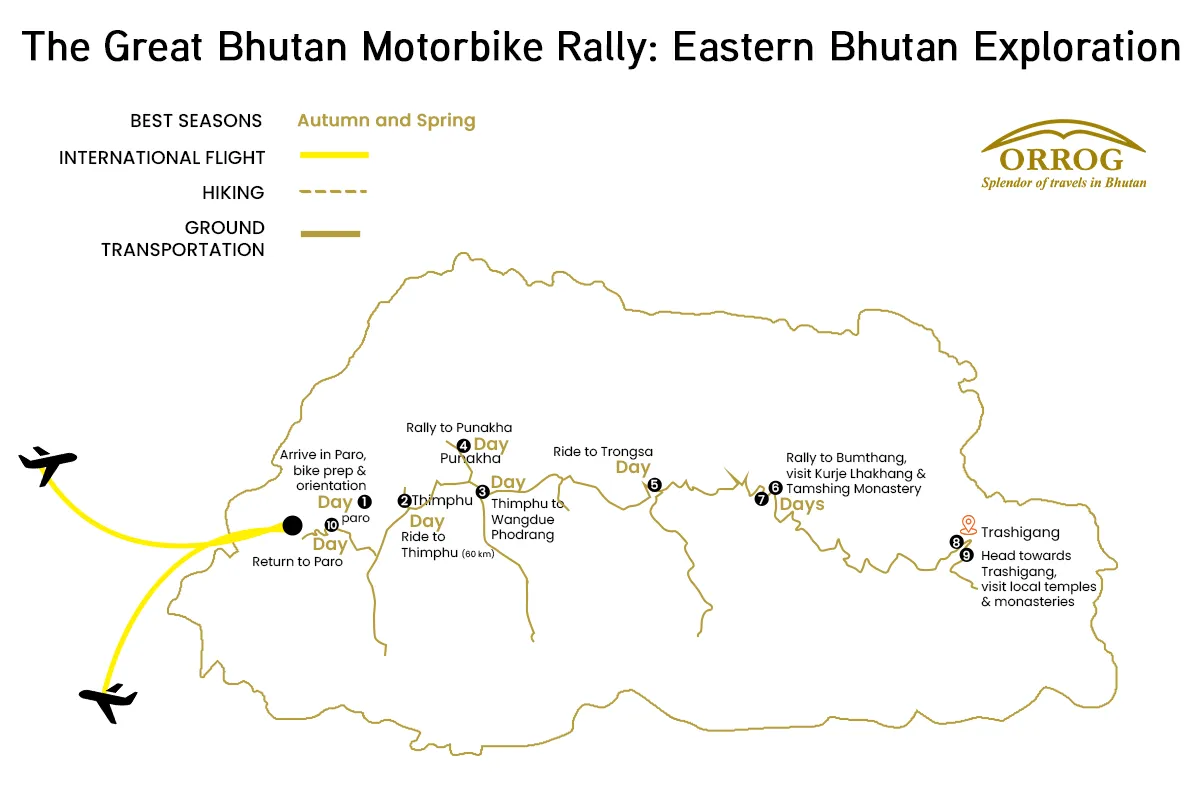
Eastern Bhutan Exploration
FAQs for The Great Bhutan Motorbike Rally: Eastern Bhutan Exploration
Yes, you may bring your motorcycle if it is in excellent roadworthy condition, properly registered, and complies with Bhutan’s temporary import and customs requirements, but rental options with full support are available.
Expect to ride 60–200 km per day, depending on the rest taken. The short rides are going to be almost 60 km and 80km, and the long rides are going to be 180 to 200km.
We have a trained medical team, emergency evacuation support, and access to clinics in major towns. But in case of a pre-existing medical condition, you should carry your own prescribed medicine.
Mostly paved and easy, but mountain roads may have sharp curves, gravel, and rough segments somewhere, which are perfect for adventure riders. It is safe and in decent condition.
Helmet, gloves, riding jacket, rain gear, boots, tool kit, a hydration pack, an emergency first aid medicine kit, and UV sunglasses & sunscreen
Yes, we provide safe drinking water at all stops and lodgings throughout the trip. At every accommodation, lunch stop, and rest point, we ensure boiled or filtered water is readily available. You’ll also be provided with refill stations from safe sources daily.
The official currency is the Bhutanese Ngultrum (BTN). Indian Rupees are also widely accepted.
US dollars may be accepted in some hotels and shops, but it's best to exchange for BTN for local use.
You can exchange money at Paro airport, major banks, or authorized exchange counters in Thimphu and Paro.
Tipping is appreciated and customary. The amount depends on the length of the tour and level of service.
You need a visa and all necessary permits for your trip. These documents can not be received on the day of your arrival, so they must be processed before coming here. After you book a trip with us, we will manage these papers for you. Your Bhutan visa is arranged by Orrog as part of the package.
The main way to come to Bhutan is through Paro International Airport, which is well-connected to cities like Bangkok, Delhi, Kathmandu, and Singapore. Most people arrive by air, but if you plan to come via road, you can enter through Phuentsholing, located on the southern border with India, which is the most commonly used entry point.
It is recommended to apply for the visa at least 20 days before your planned departure date so that there is enough time for processing your Bhutan visa, finalizing your itinerary, and arranging your guides and transportation. Although visa processing itself is relatively fast once payment is received, early preparation helps avoid delays and ensures availability, especially during peak seasons (spring and autumn).
You don’t require a passport-size photo for the visa, but it is wise to carry at least 2–4 recent passport-sized photographs during your trip. These may be needed for local permits, registration, or when applying for a local SIM card upon arrival in Bhutan.
Yes, you can lengthen your stay in Bhutan either before or after your trip. Bhutan’s tourism model requires visitors to pay a Sustainable Development Fee (SDF) and a daily package cost, so any extra days will involve additional charges. Extensions are a great opportunity to explore cultural sites in Paro, Thimphu, or even add another short trip or day hike.
Yes, Bhutan requires full tour payment in advance before your visa can be processed and issued. The government of Bhutan regulates this policy to ensure that all travel arrangements are confirmed through a licensed Bhutanese tour operator. We are a licensed tour operator that ensures you have everything you need for a trouble-free trip.
Any personal expenses are not covered in the package like:
- Tips for your guide and other staff
- Bottled drinks and snacks(personal expense)
- Souvenirs or local crafts
Credit cards are easily accepted in major cities like Paro and Thimphu. But in remote areas, you may not have access to a card or an ATM. So, it is best to carry some cash before heading for the trip.
Tipping is not mandatory, but it is a widely appreciated gesture and a customary way to show gratitude for good service. The tipping guideline would be to give USD 5-10 per day as a tip for the guides and other staff.
Paro International Airport is the only international airport in Bhutan. It is well connected by flights from cities like Bangkok, Delhi, Kathmandu, and Singapore.
Yes, airport pick-up and drop-off are included in the package. We will have your guide and driver meet you at the airport and transport you to your hotel.
While Bhutan's roads are mostly paved, some parts are narrow, winding, and occasionally affected by weather. However, we ensure your travel is safe, well-maintained, and driven by an experienced professional throughout the journey.
The national language is Dzongkha, but many Bhutanese also speak English. If you speak English and are worried about communicating with the local people, you will have your guide as a translator.
Yes, all licensed tour guides in Bhutan are required to speak fluent English. Many are also trained in other languages such as German, Japanese, or French. Communication during the trip will be smooth and clear in English.
Most signboards, tourist maps, and information brochures are written in English, especially in tourist destinations like Paro, Thimphu, and trailheads. Directional signs along routes are often labeled in both Dzongkha and English.
No, learning Dzongkha is not at all needed for the trip, but knowing a few basic words like "Kuzu zangpo la" (Hello) or "Kadrinche la" (Thank you) is a good way to interact with the locals.
Language barriers are minimal, as your guide will handle all communication with locals and support staff. Your guide will translate for you during your interaction with the locals.
To greet people, you can greet with locals “Kuzu zangpo la” (Hello) by performing a slight bow. Most common greetings include physical greetings, such as shaking hands less visible, especially in rural areas.
Yes, but remember to seek permission, especially when taking photos of monks, locals, or temples. Please note that clicking photos is not allowed at most religious sites.
Visitors should dress modestly and respectfully. This means:
- Covering shoulders and knees
- Removing hats and sunglasses
- Not wearing shorts or sleeveless tops
This applies to both men and women.
Yes, Bhutanese society is deeply rooted in Buddhism and tradition. Here are some key taboos:
- Do not point your feet at people or sacred objects
- Never touch anyone on the head, as it is considered sacred
- Walk clockwise around temples, stupas, and religious monuments
- Avoid public displays of affection
While gifts are not expected, they may be accepted graciously if given with respect. It is advisable to consult with the guide before giving out anything.
Bhutan typically uses Type C, Type D, and Type G electrical outlets. Standard safe voltage is 230V and frequency is 50Hz; therefore, ensure that your equipment is compatible with this voltage
Indeed, it is highly advised to take along a universal travel adapter, particularly one to fit a variety of types of plugs, because plugs can be different in a hotel or a guesthouse.
Bhutan follows Bhutan Time (BTT), which is UTC/GMT +6 hours. This time zone remains consistent throughout the year.
No, Bhutan does not observe daylight saving time. The country maintains the same time year-round.
Bhutan is 30 minutes ahead of India. For example, 12:00 PM in India is 12:30 PM in Bhutan.
Yes, souvenirs can be bought in Paro or Thimphu before or after the trip.
Some popular souvenirs include hand-woven textiles (kira and gho fabric), prayer flags, thangka (religious scroll) paintings, handmade paper products, traditional masks, and Buddhist artifacts.
You can do some gentle bargaining in local street markets. However, in government-run shops and fixed-price stores, prices are usually non-negotiable.
Yes, you can easily purchase a SIM card upon arrival in Bhutan. We will assist you with the process, and you'll need a passport copy and a passport-sized photo.
No, internet access is not available during the trip. However, Wi-Fi is available in hotels in Paro and Thimphu before and after the trip.
You will stay in 3-star hotels, guesthouses, or boutique lodges along the route. We can upgrade you to luxury resorts upon request.
Yes, secure parking for motorcycles is available at the hotels.
We provide well-maintained bikes for rent. You can also bring your own bike with the proper permits.
Helmets are provided by us, but you’re encouraged to bring your own riding jacket, gloves, boots, and pants for the best fit and protection. We also offer full gear rental service in case you don’t want to carry yours.
Yes, a backup vehicle will follow the group, carrying luggage, spare parts, a mechanic, and first-aid supplies.
Roads vary from well-paved highways to gravel and rugged mountain routes. You should be confident in handling a bike on mixed terrain.
You will typically ride for 4–7 hours per day with breaks for sightseeing, meals, and photography.
Yes, Bhutan has relatively low traffic and cautious drivers. However, due to winding roads and changing weather, caution and skill are essential.
A trained mechanic travels with the group for technical issues. In case of a medical emergency, first aid is available, and evacuation can be arranged if necessary.
Essentials include layered clothing, rain gear, riding boots, sunglasses, sunscreen, a reusable water bottle, and personal medication.
You should carry a well-fitting helmet, an armored jacket, gloves, protective pants, and riding boots for comfort and safety while driving along the mixed terrain.
The package includes bike rental, fuel, all accommodations and meals, guide, support vehicle, mechanic, entrance fees, permits, and airport transfers.
It’s recommended to book at least 2–3 months in advance, especially for group rides or during popular seasons like spring and autumn, because of a comparatively larger number of travellers.
Reviews & Ratings
-
Guarantee -
Thimphu,Bhutan -
975+17160228
Ready to Explore Bhutan?
Start your journey today and discover the magic of Bhutan with our expert guides and carefully crafted tours.
Book This Trip
-
No booking or credit card fees -
Best price guarantee -
Full customize trip
Ask a Question
Feel free to ask us anything about this tour. A travel expert will then get back to you as soon as possible
Ready to Explore Bhutan?
Start your journey today and discover the magic of Bhutan with our expert guides and carefully crafted tours.
